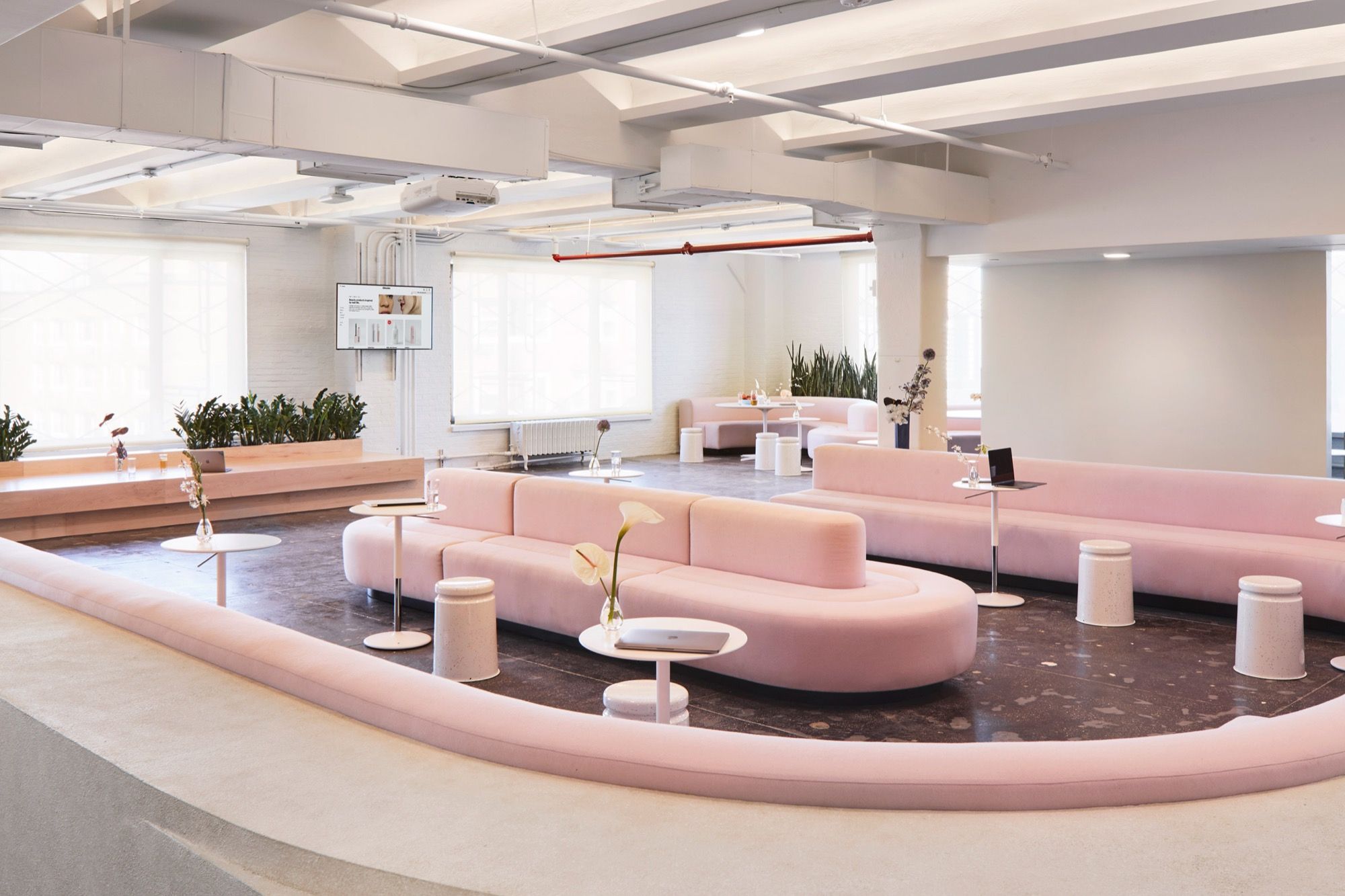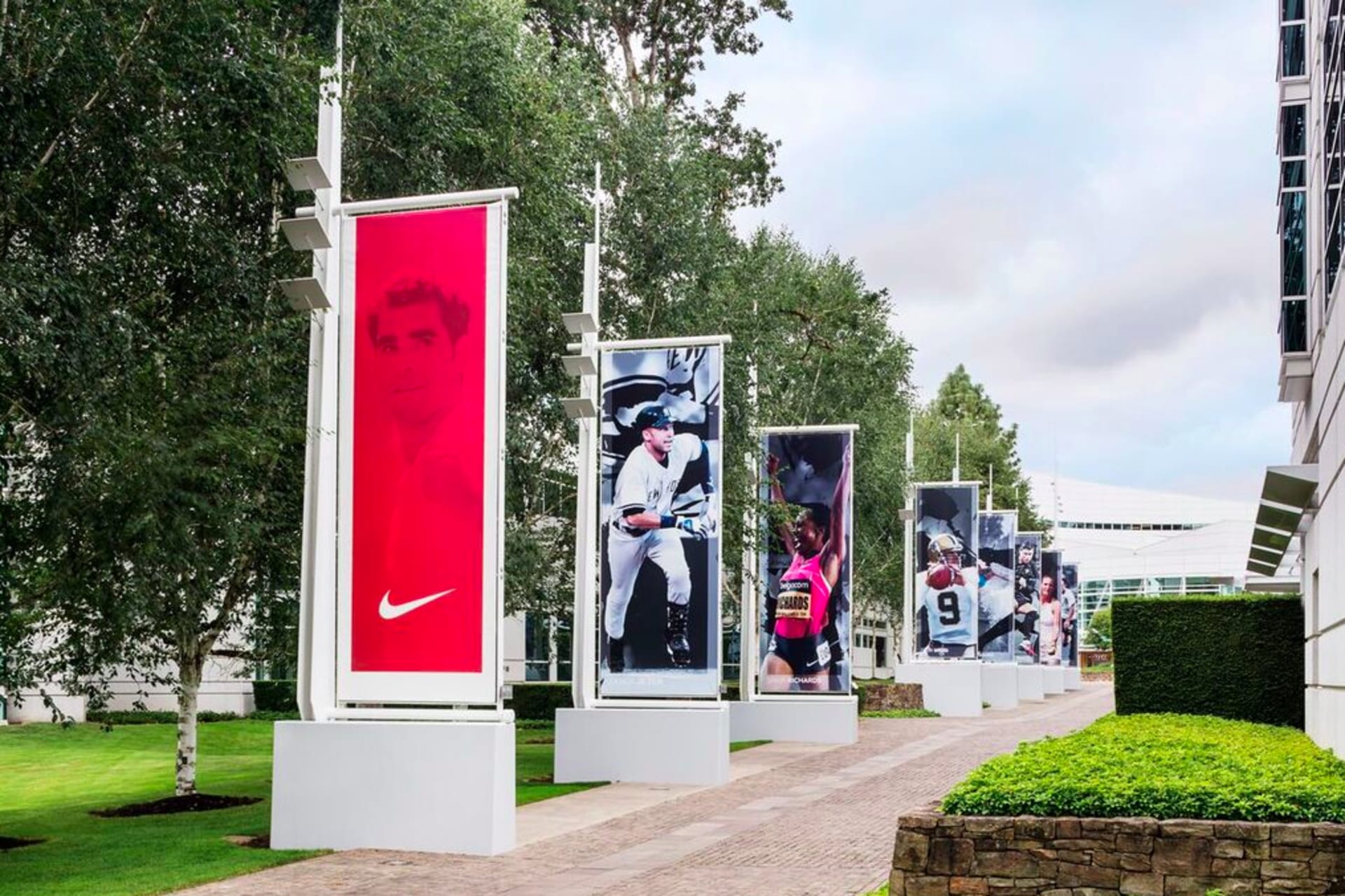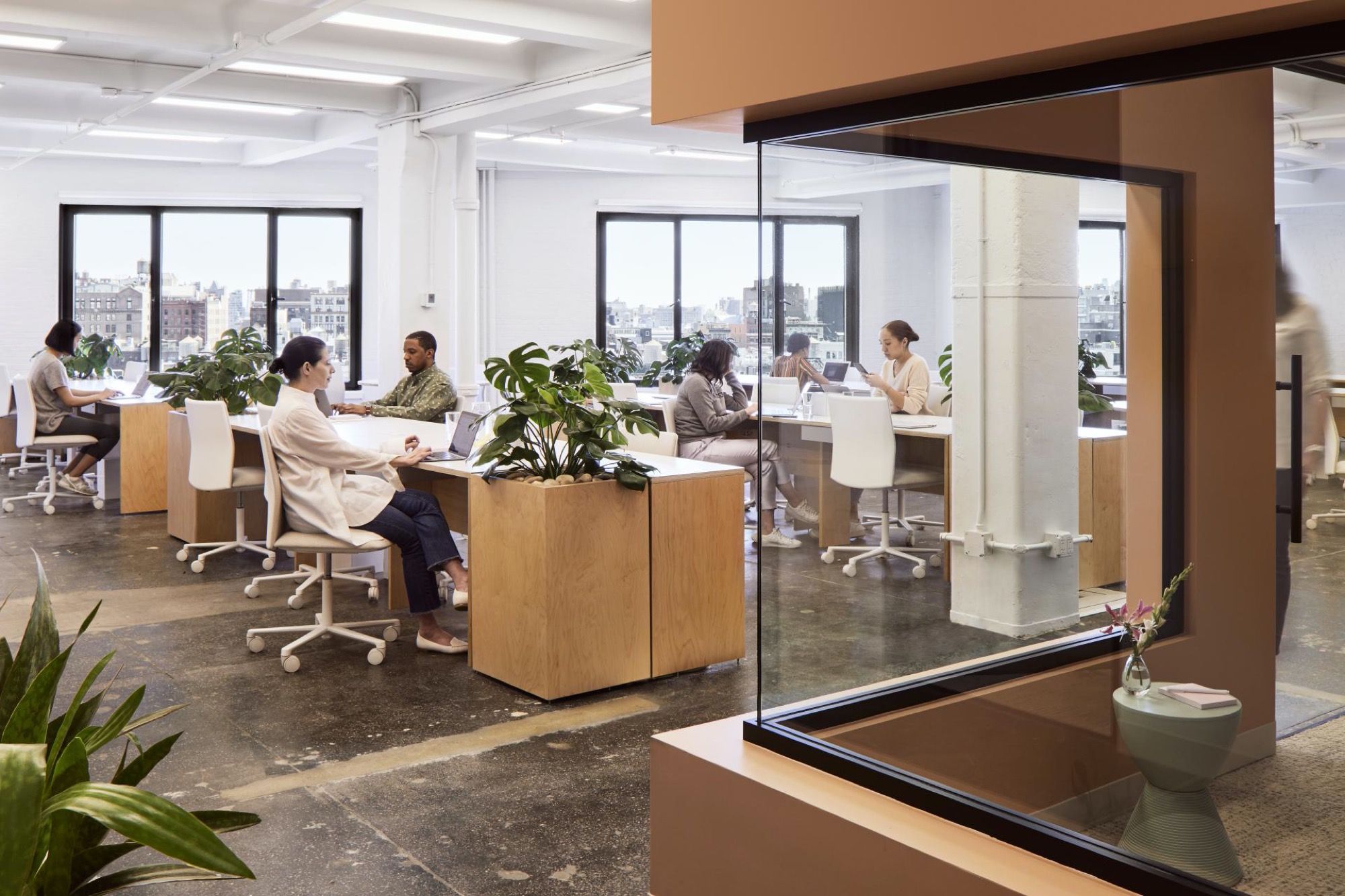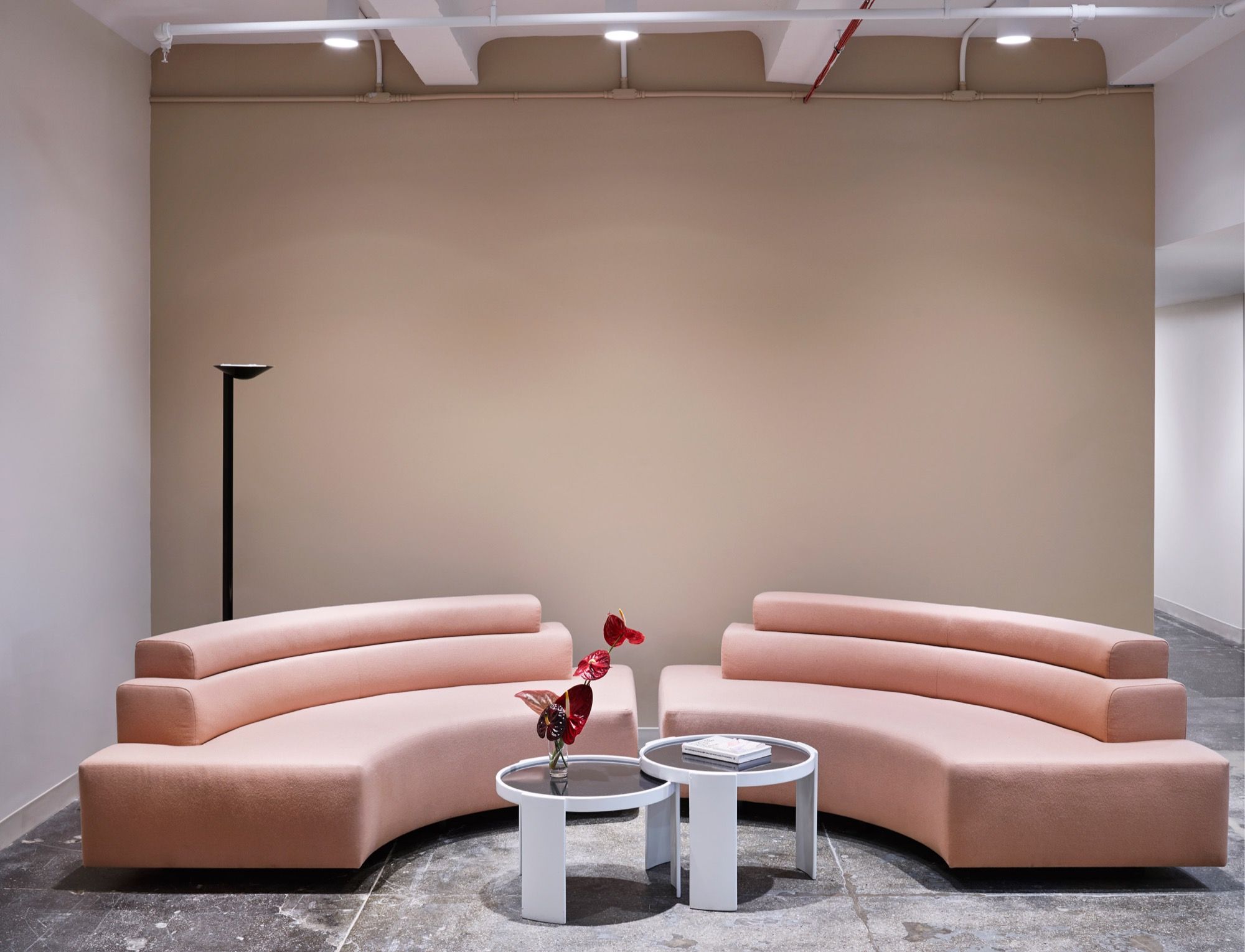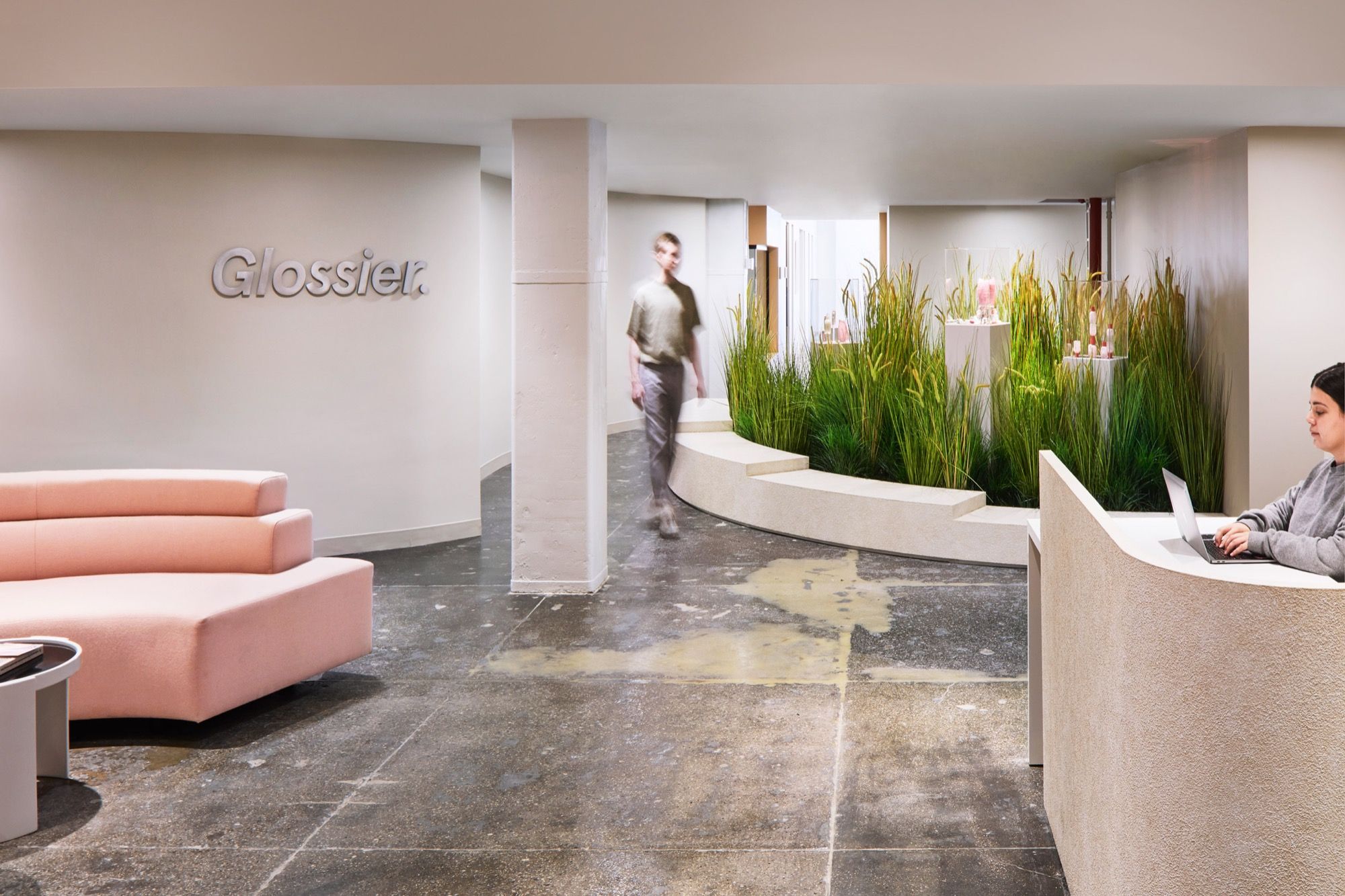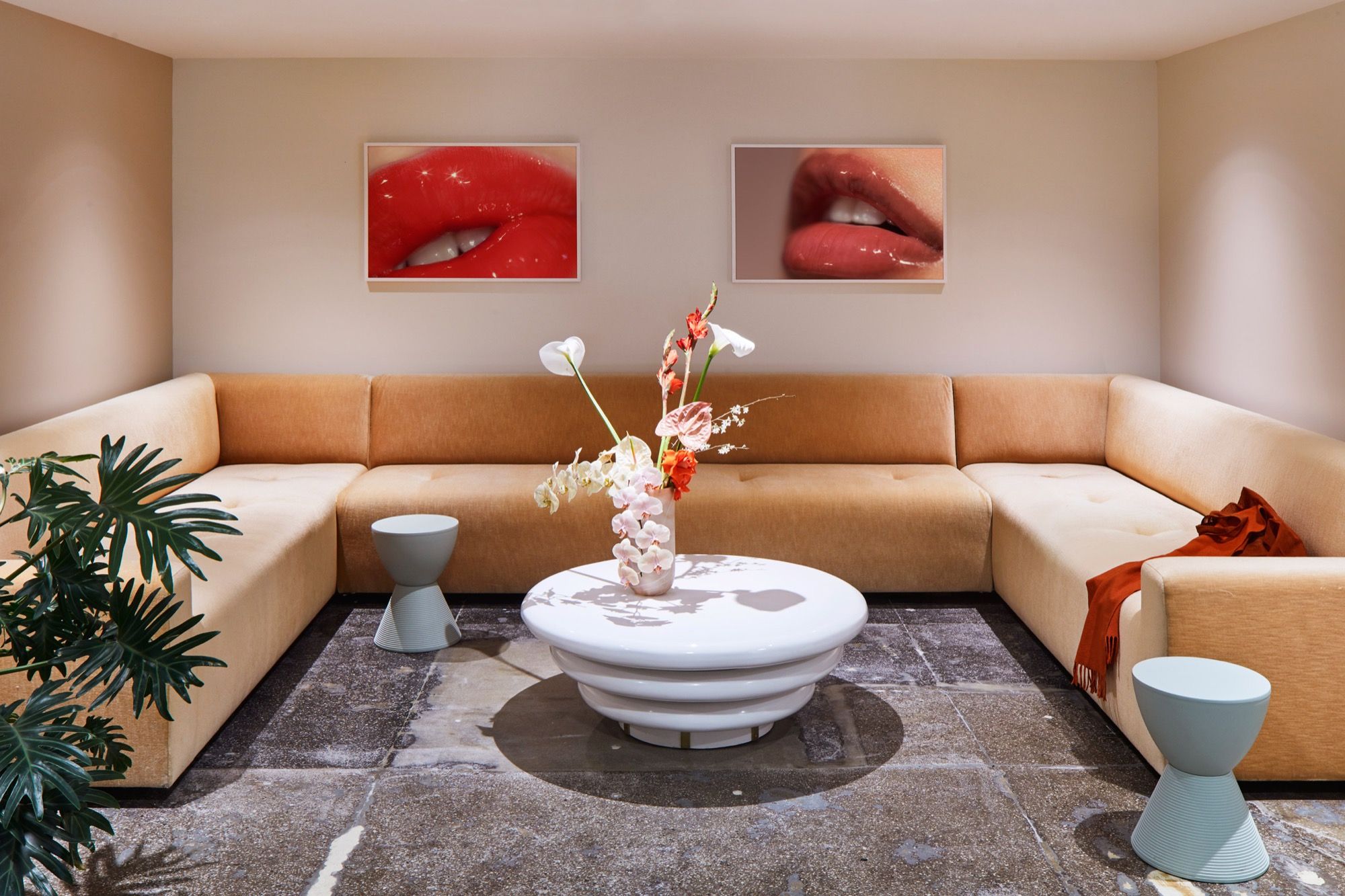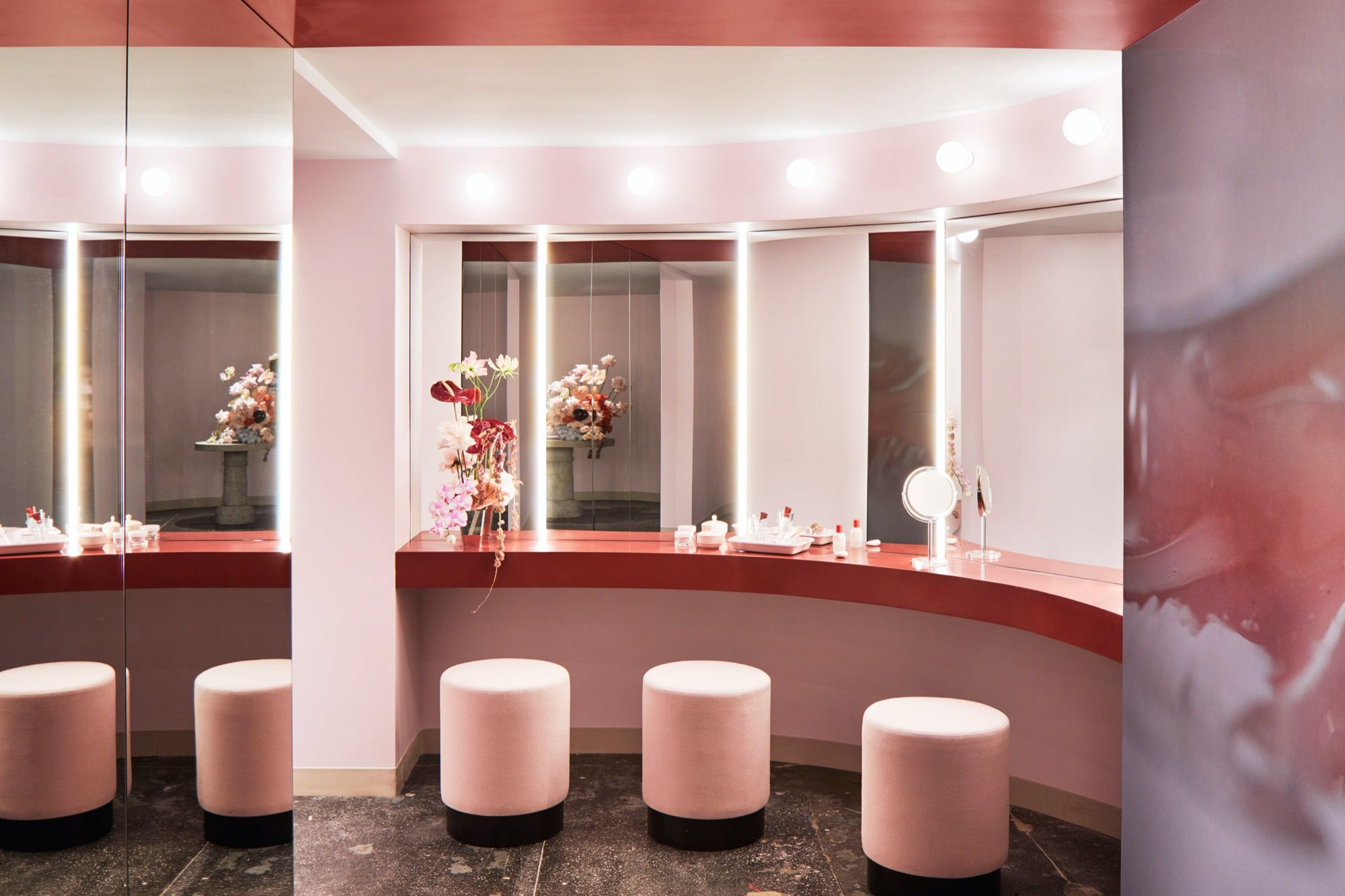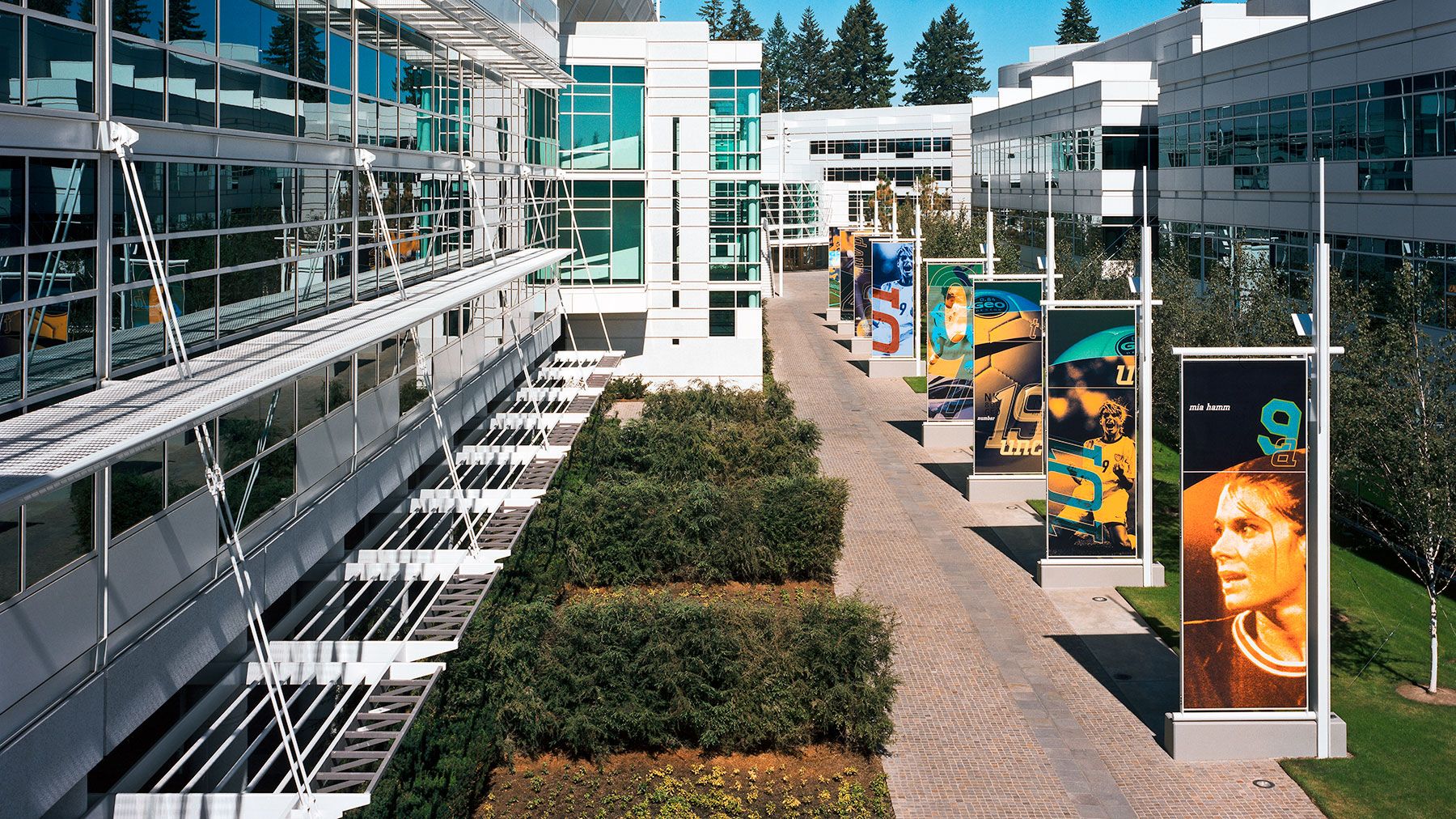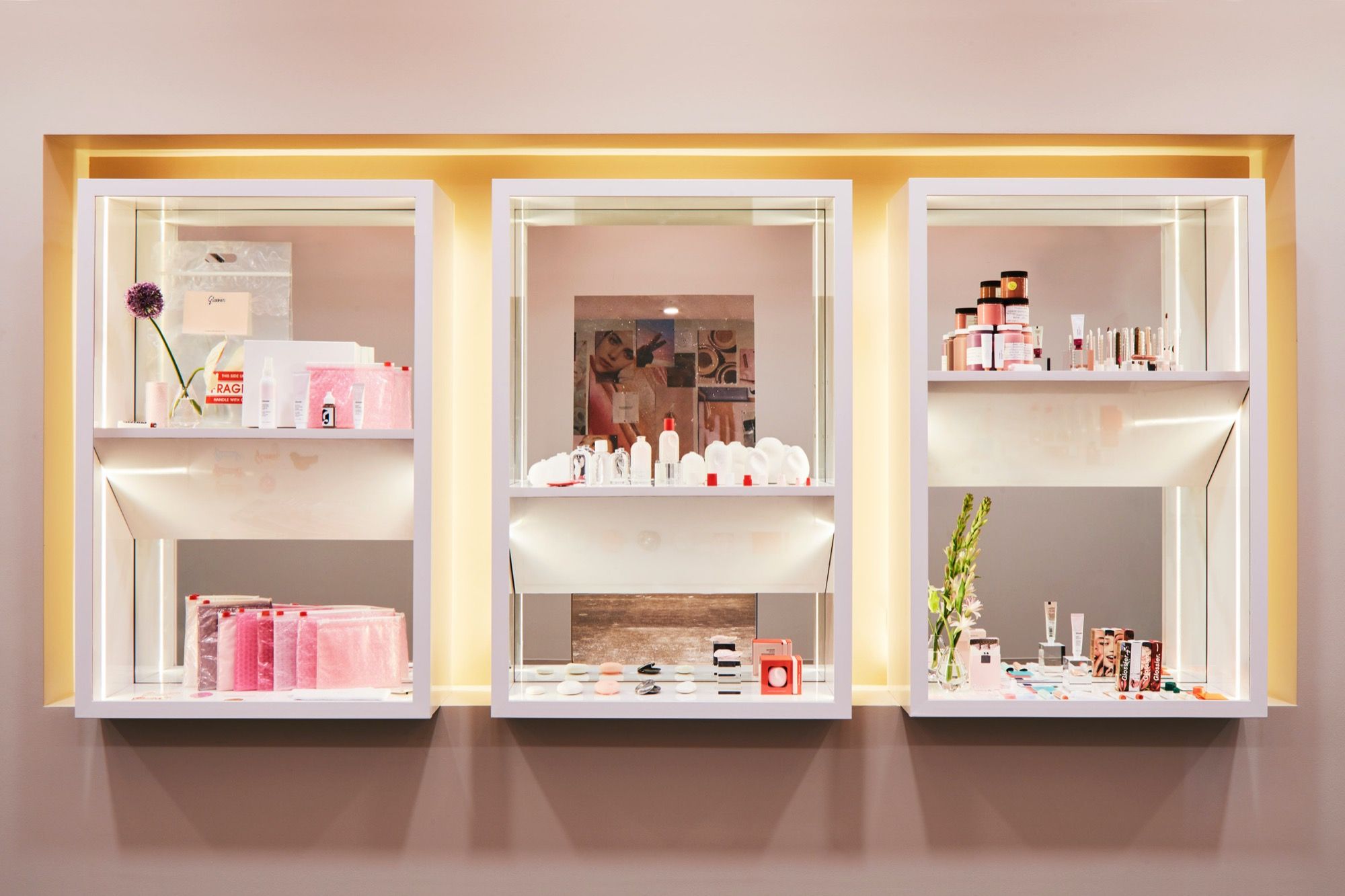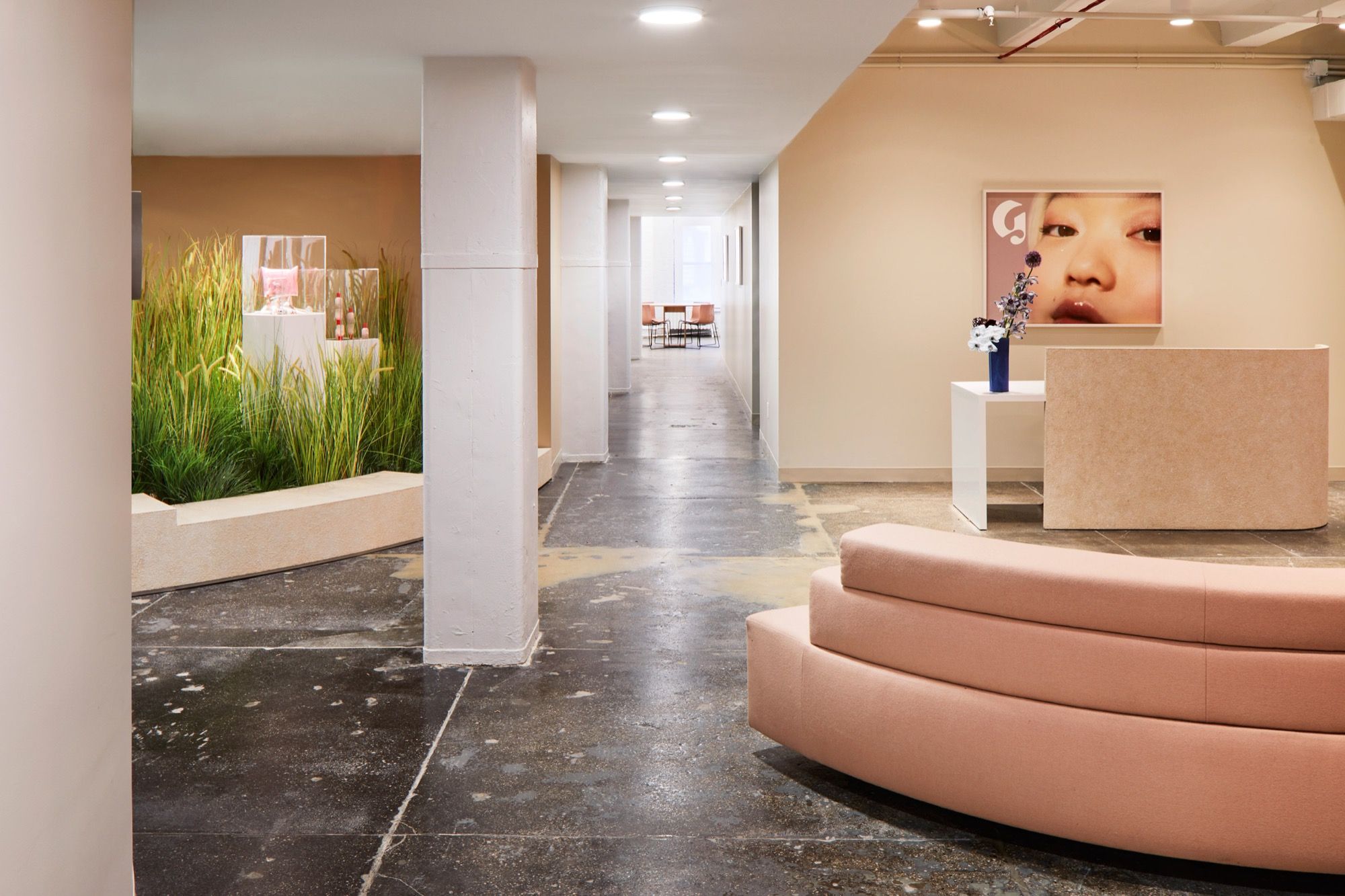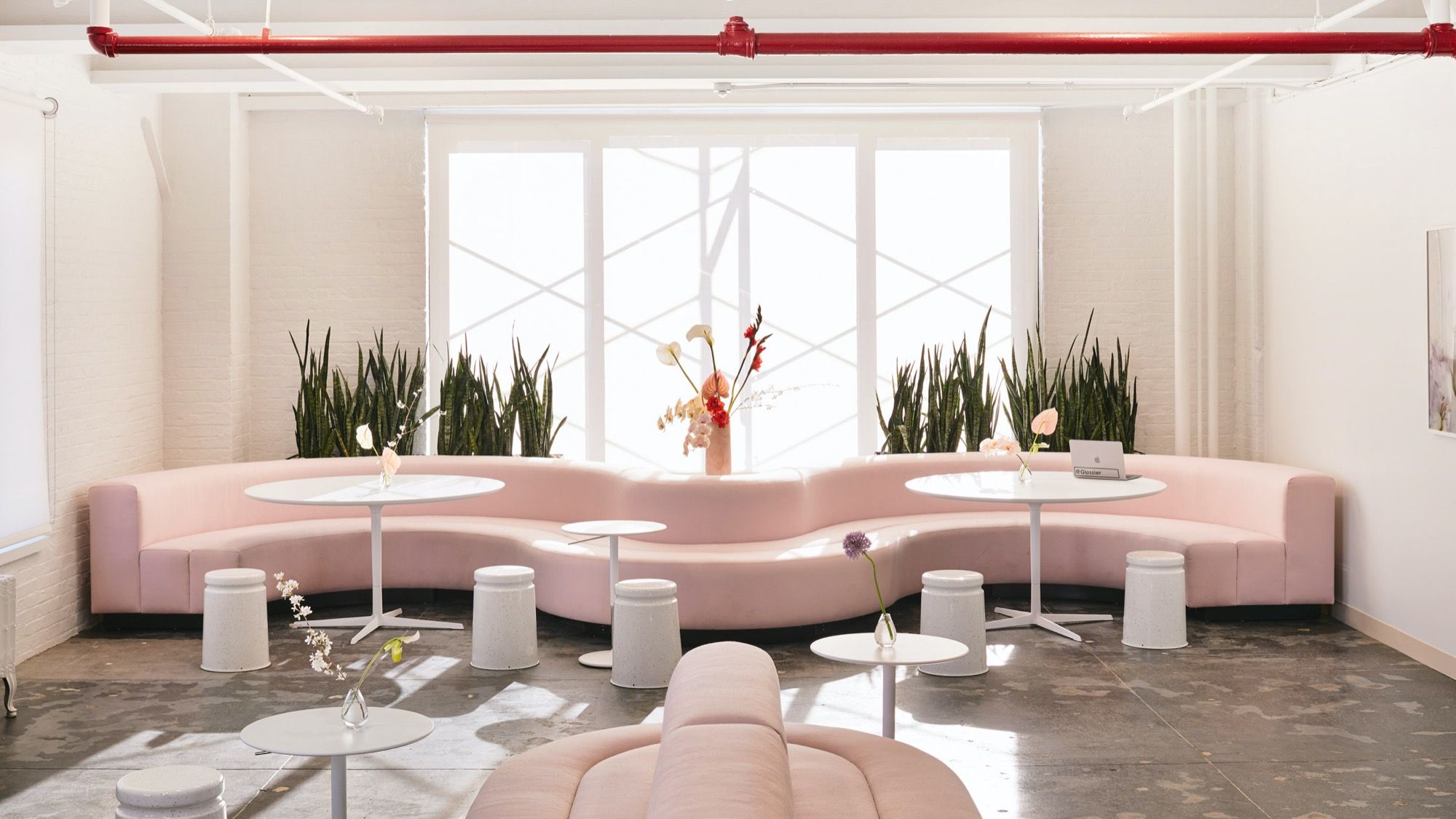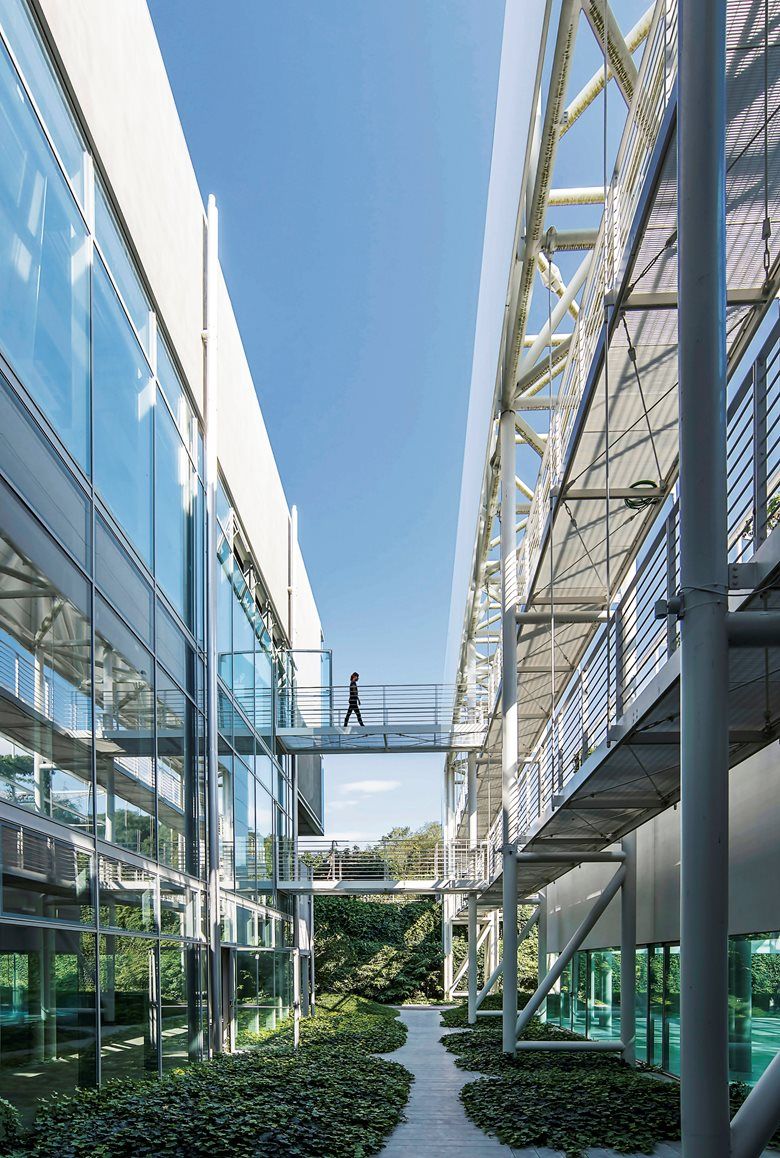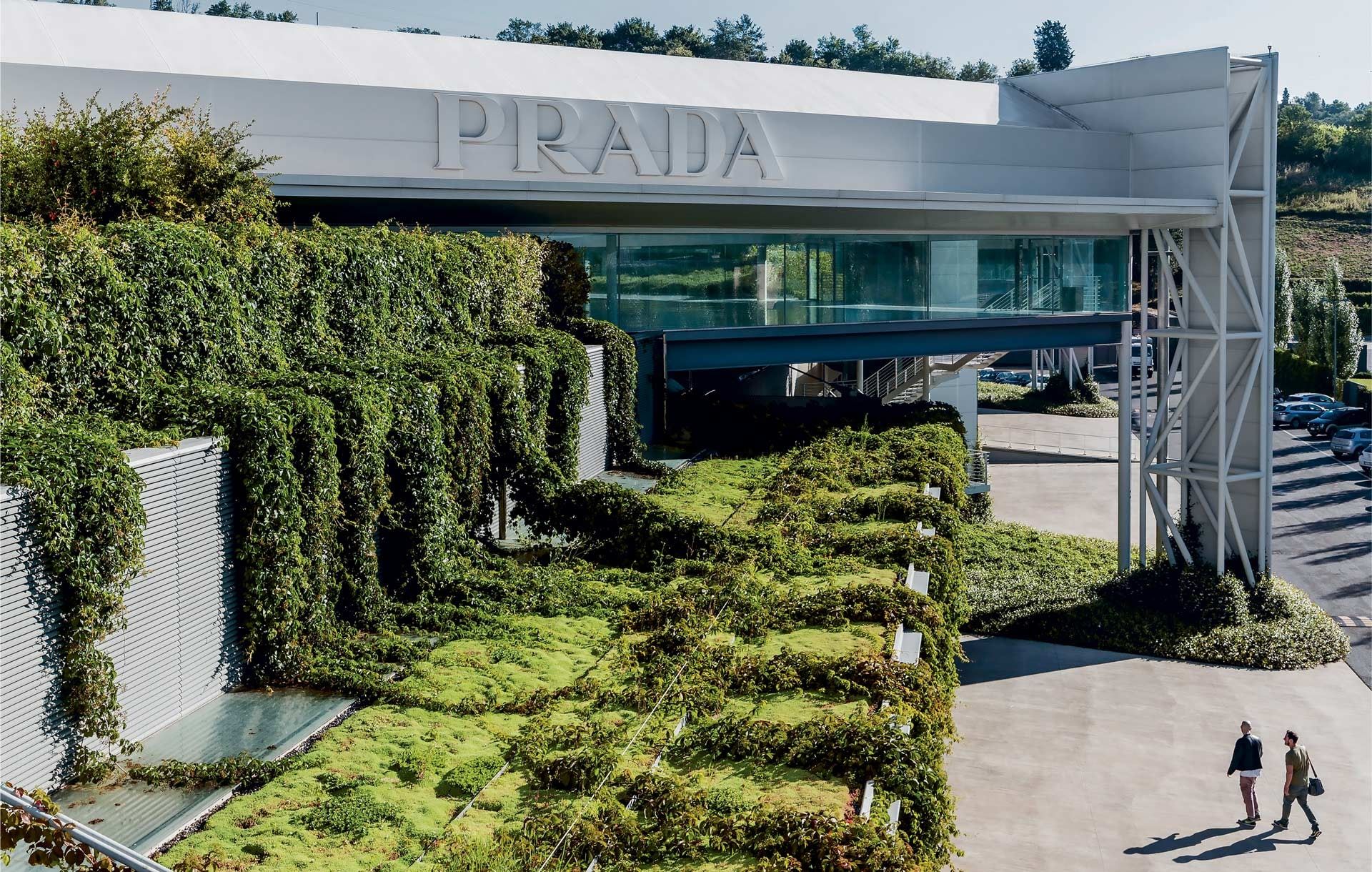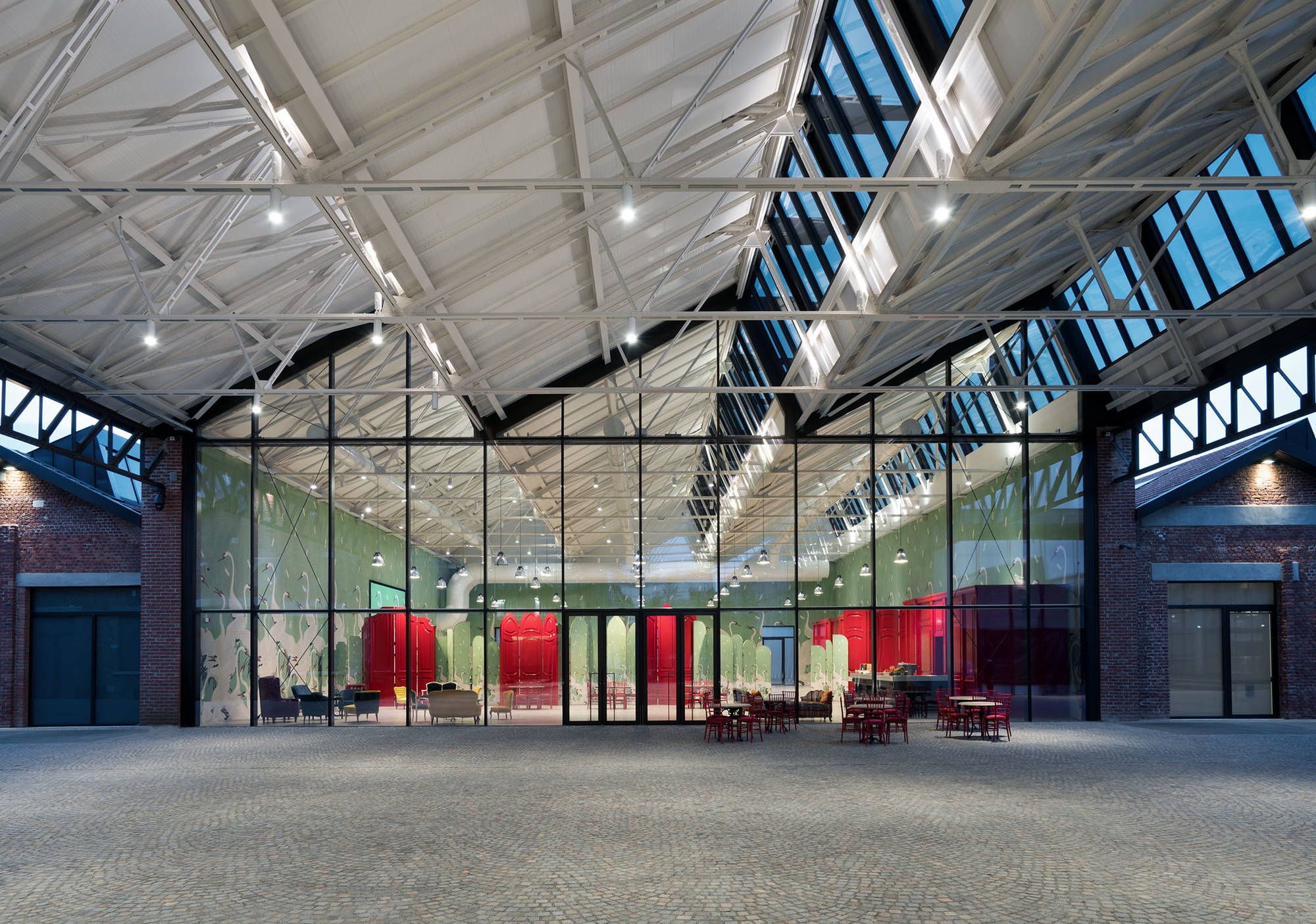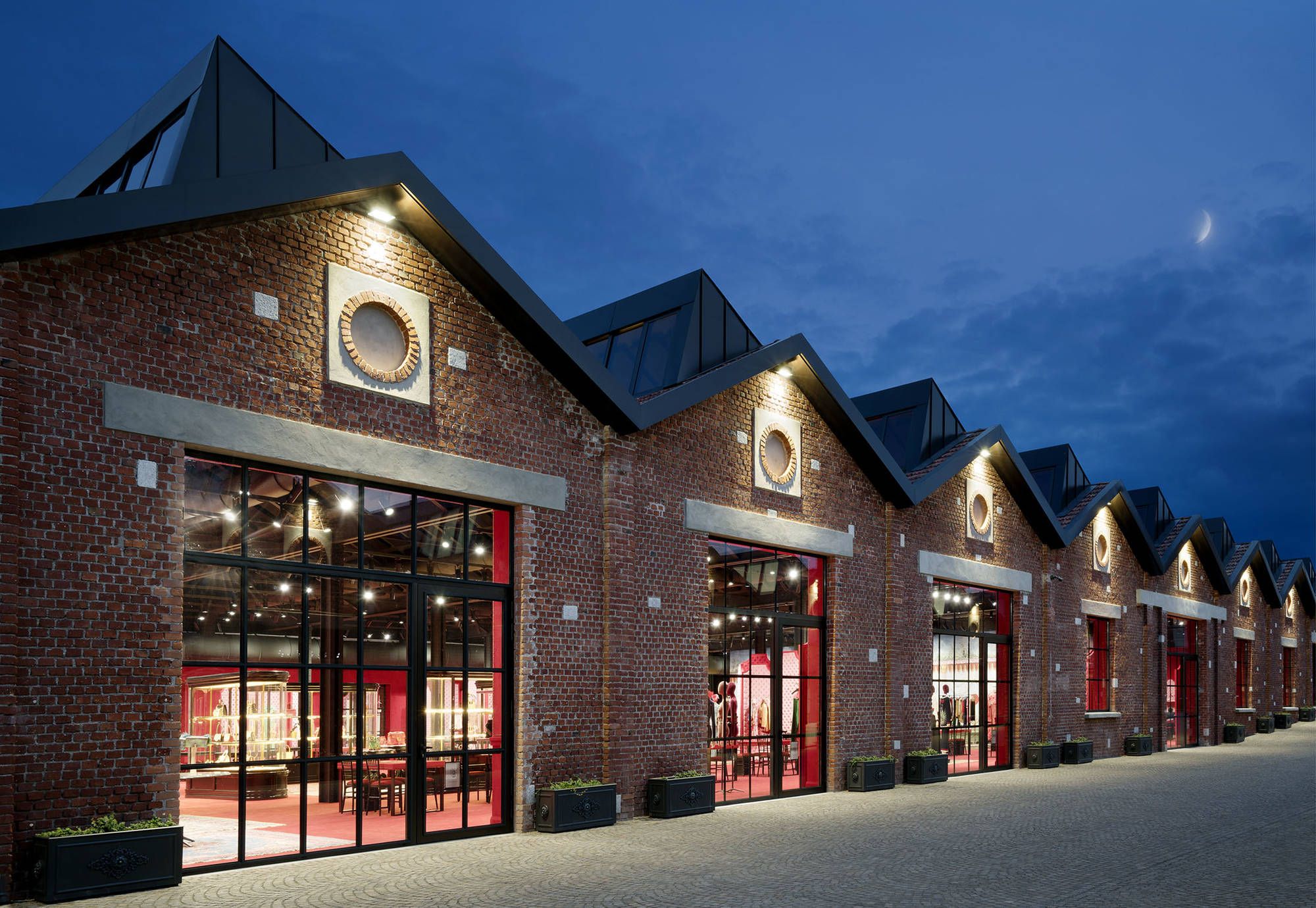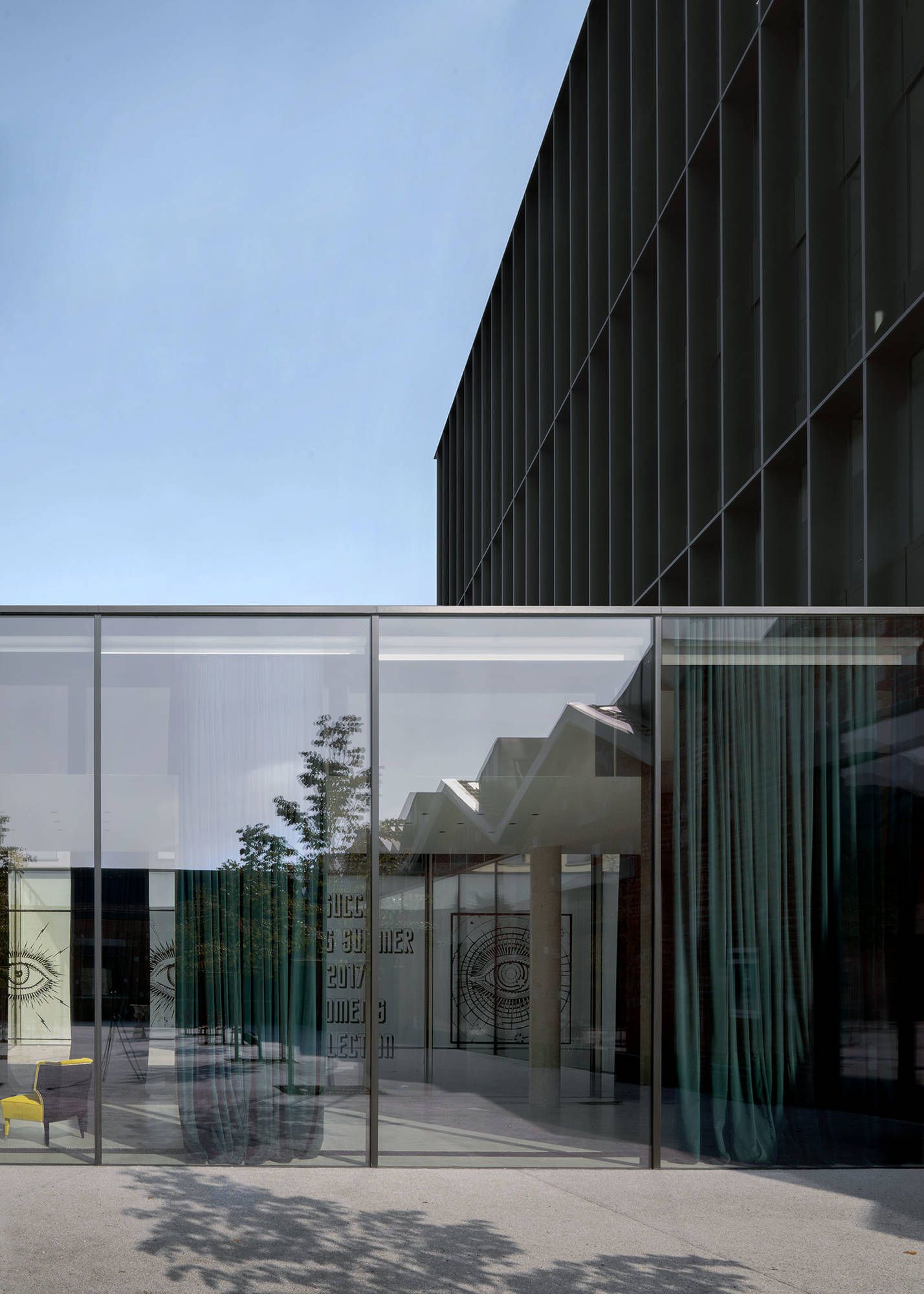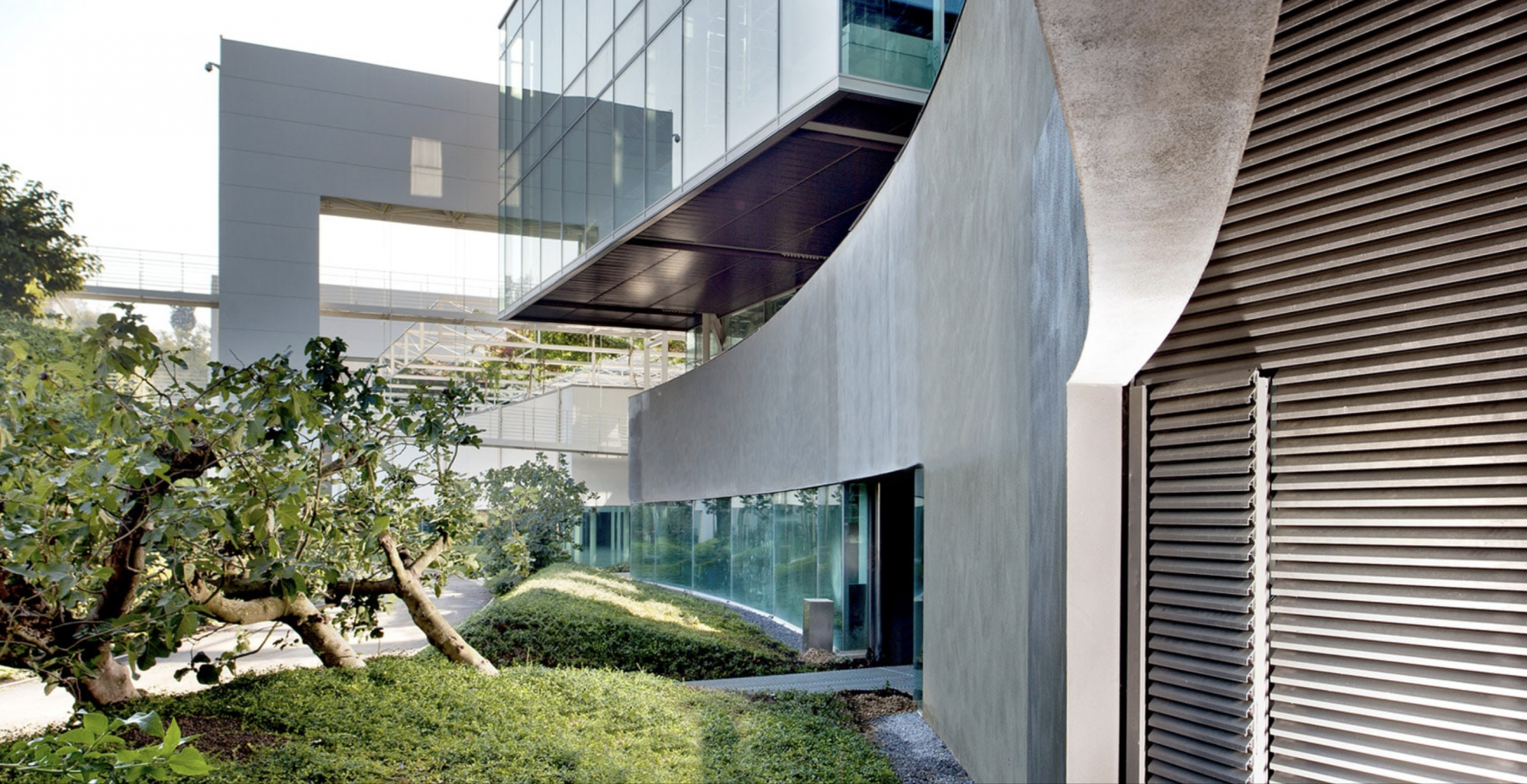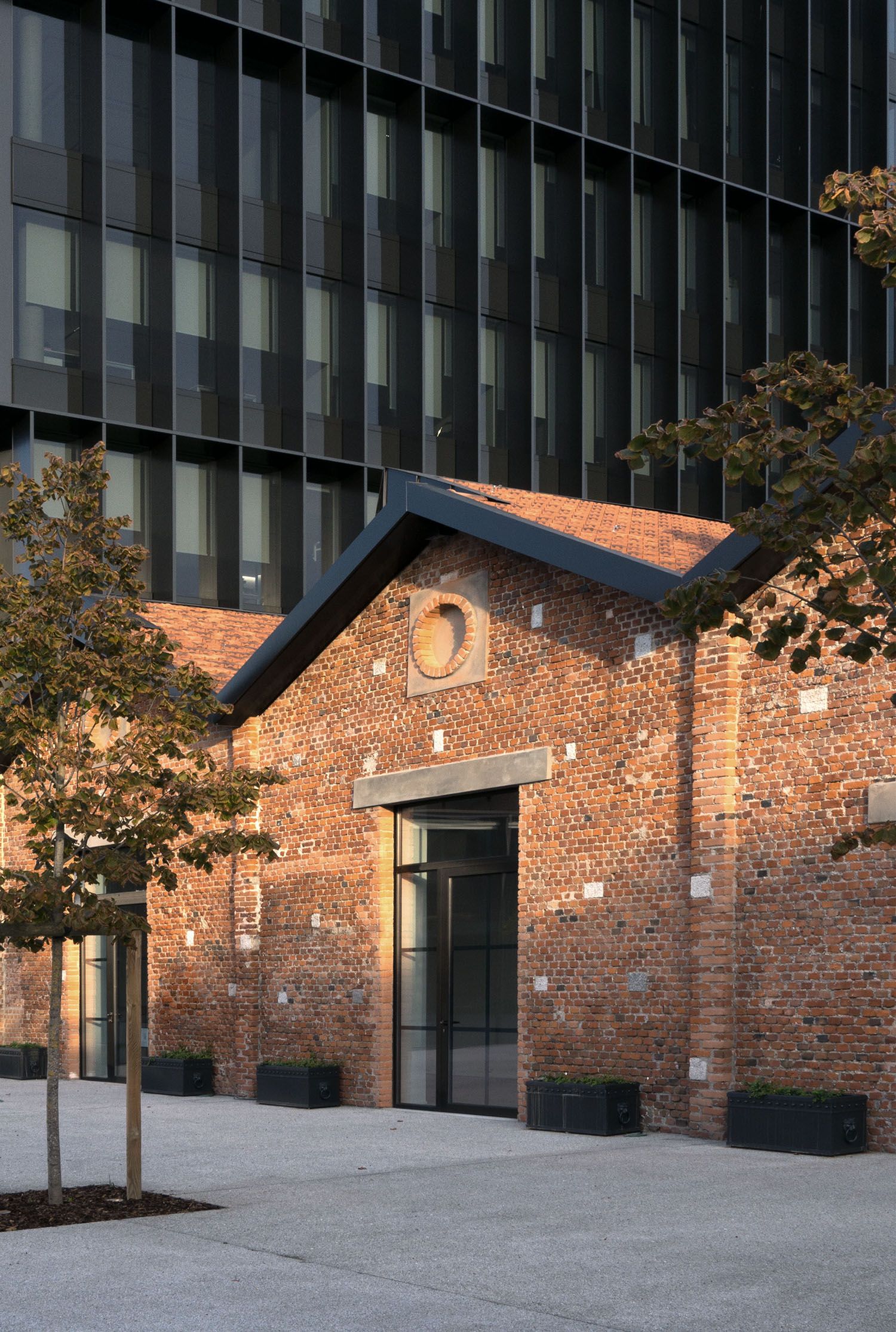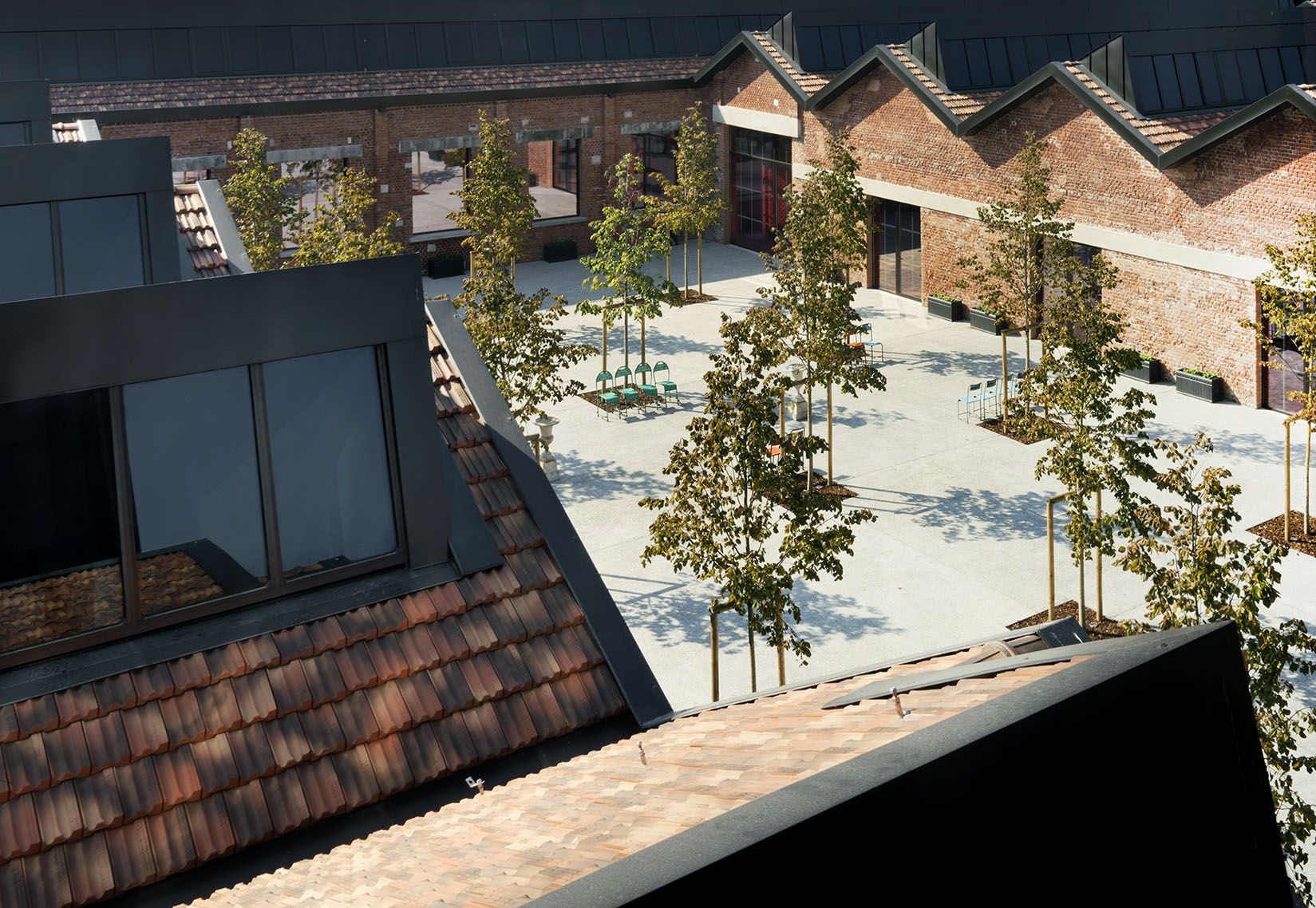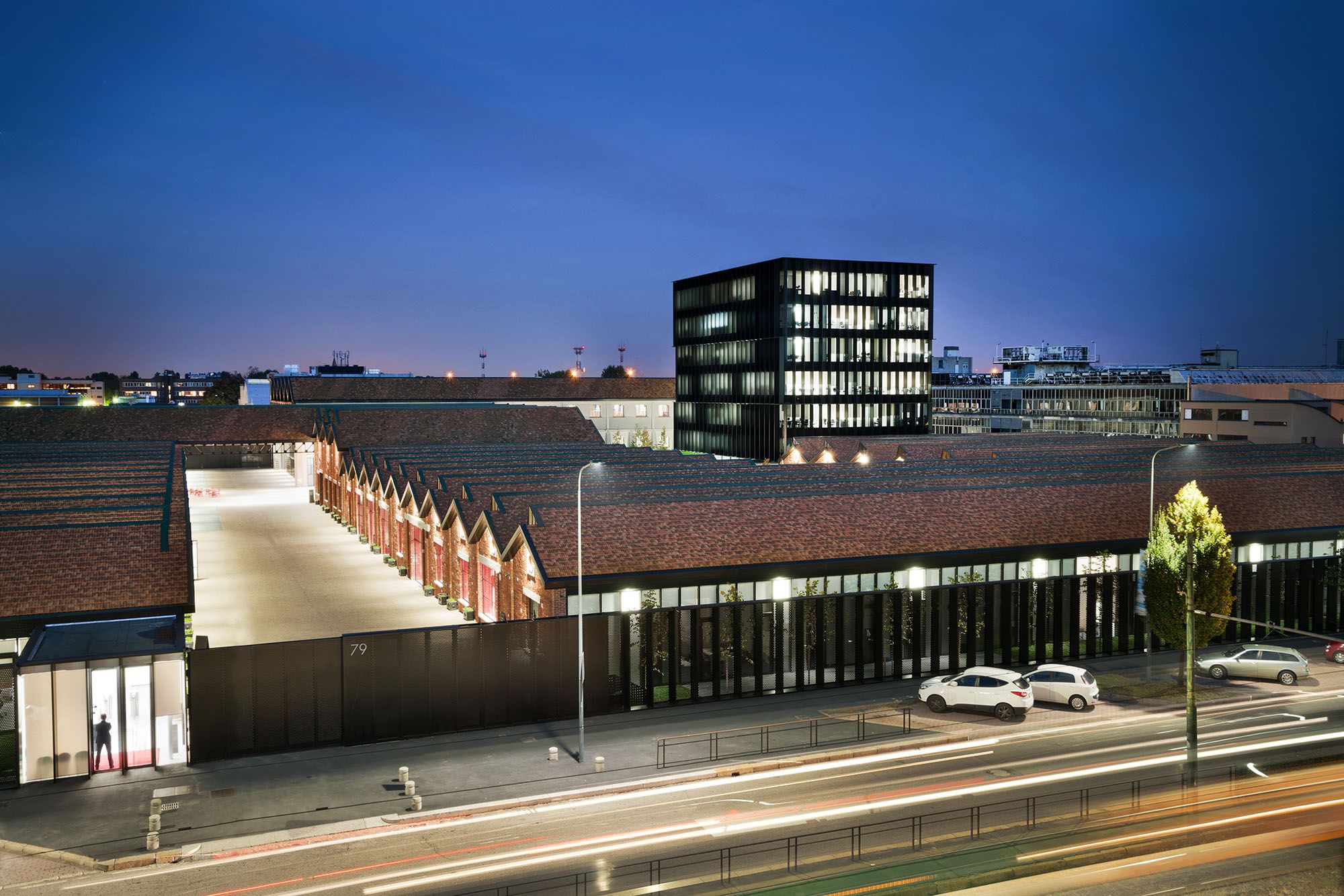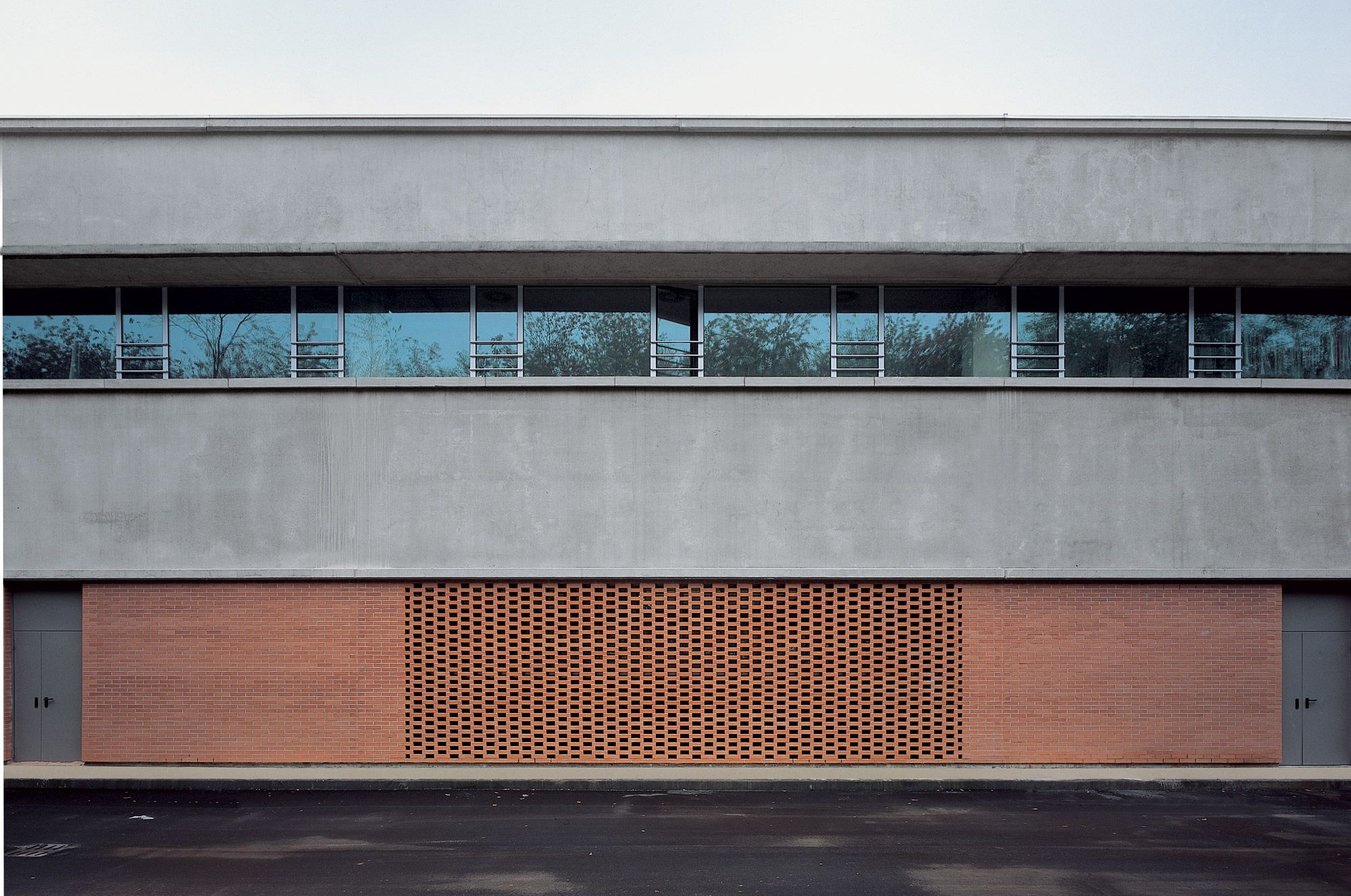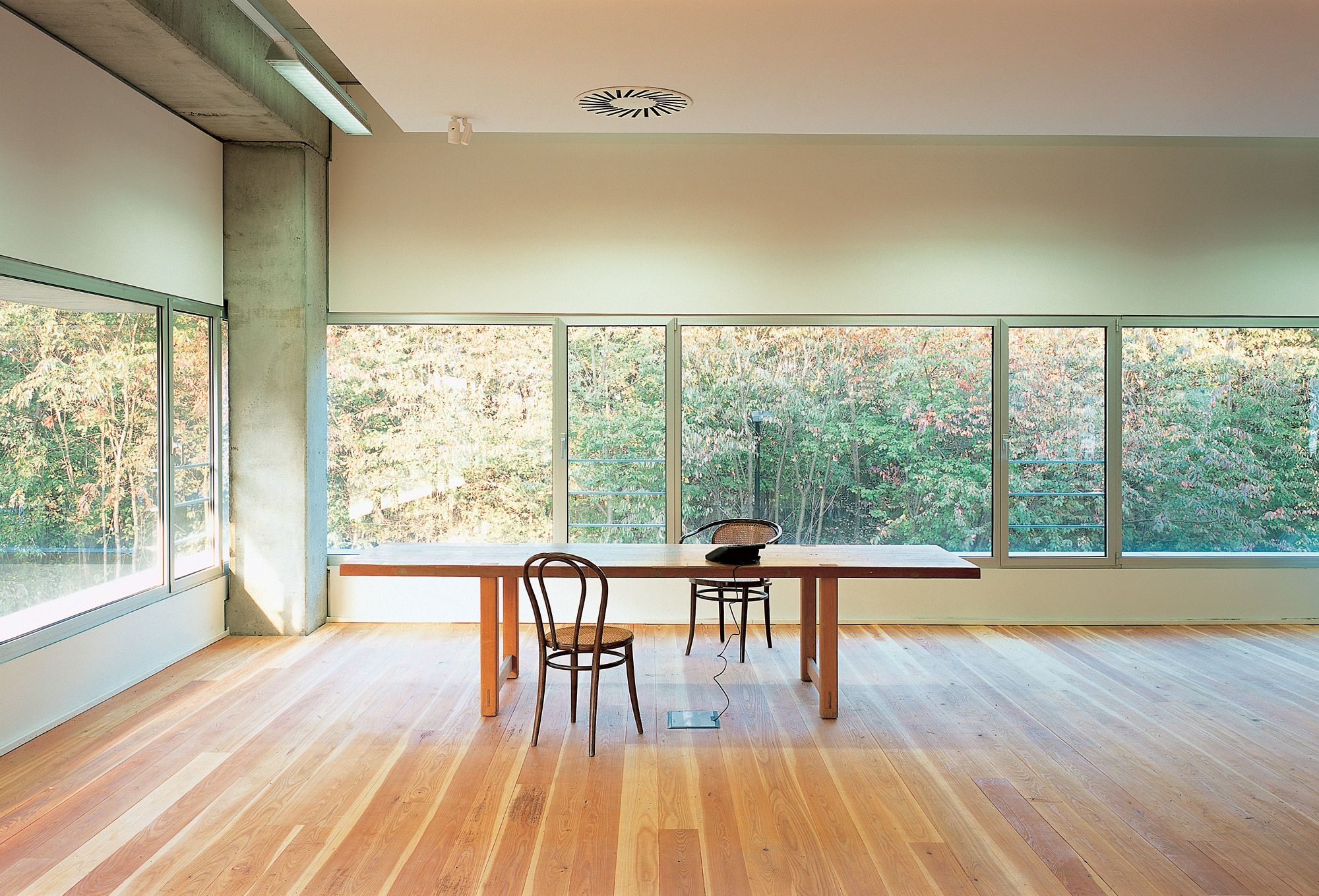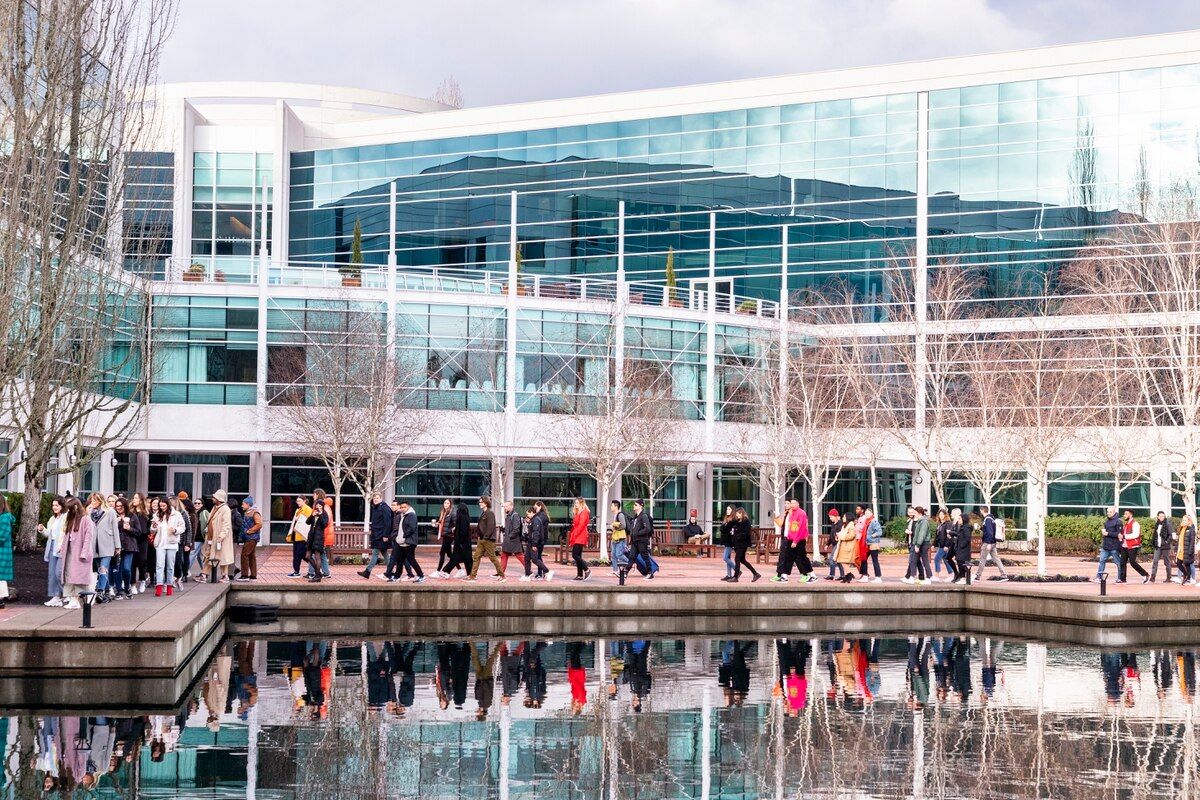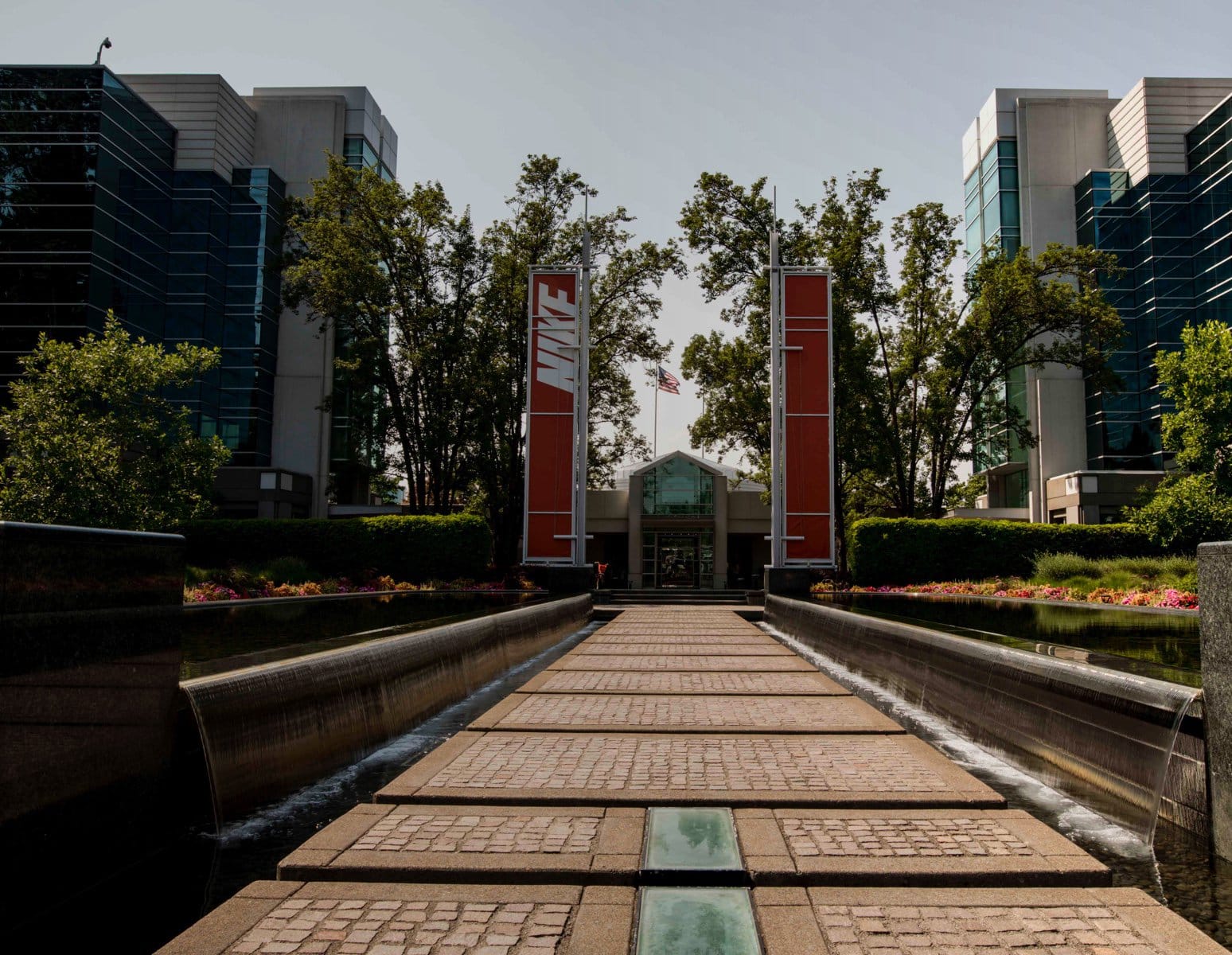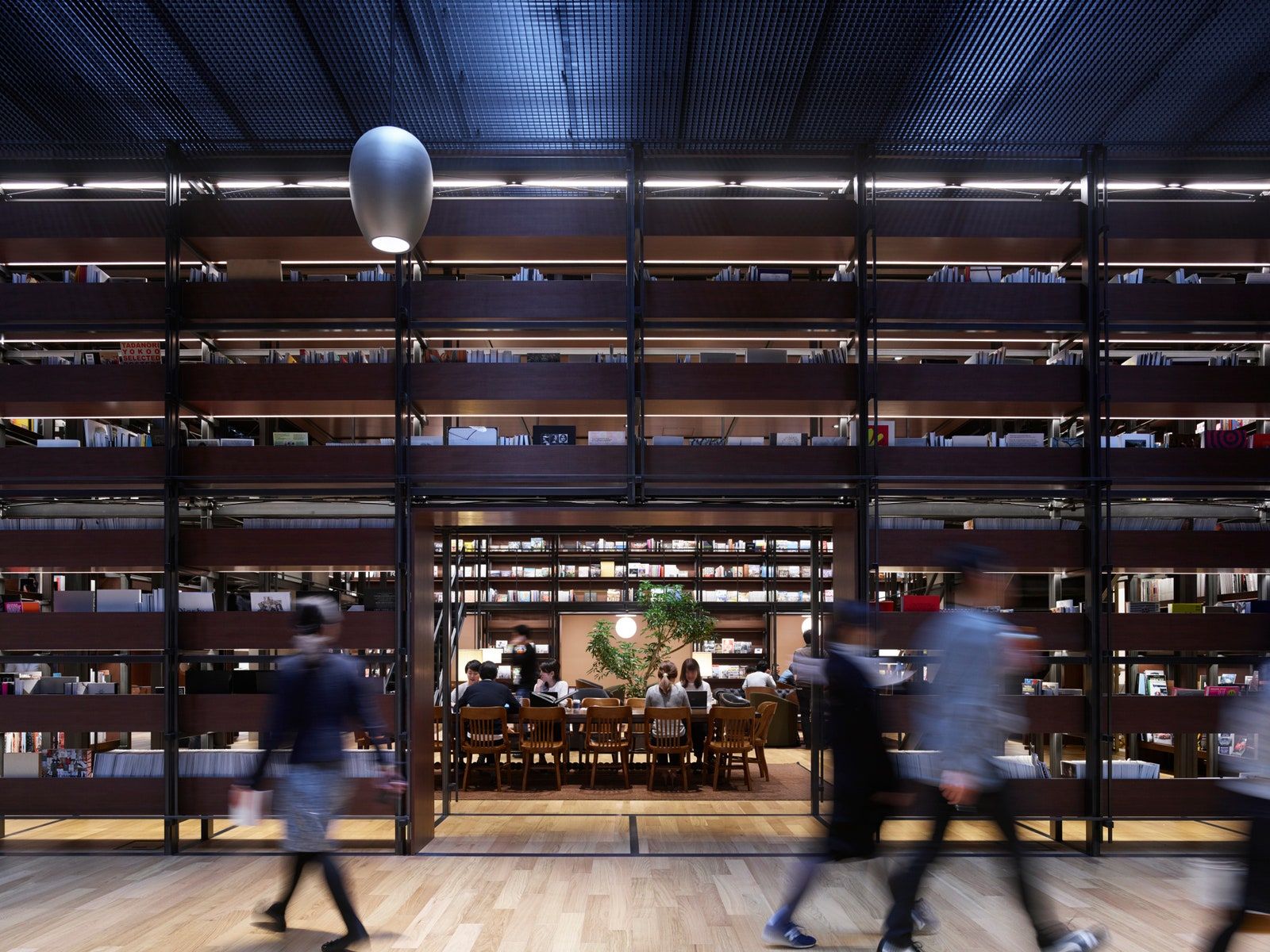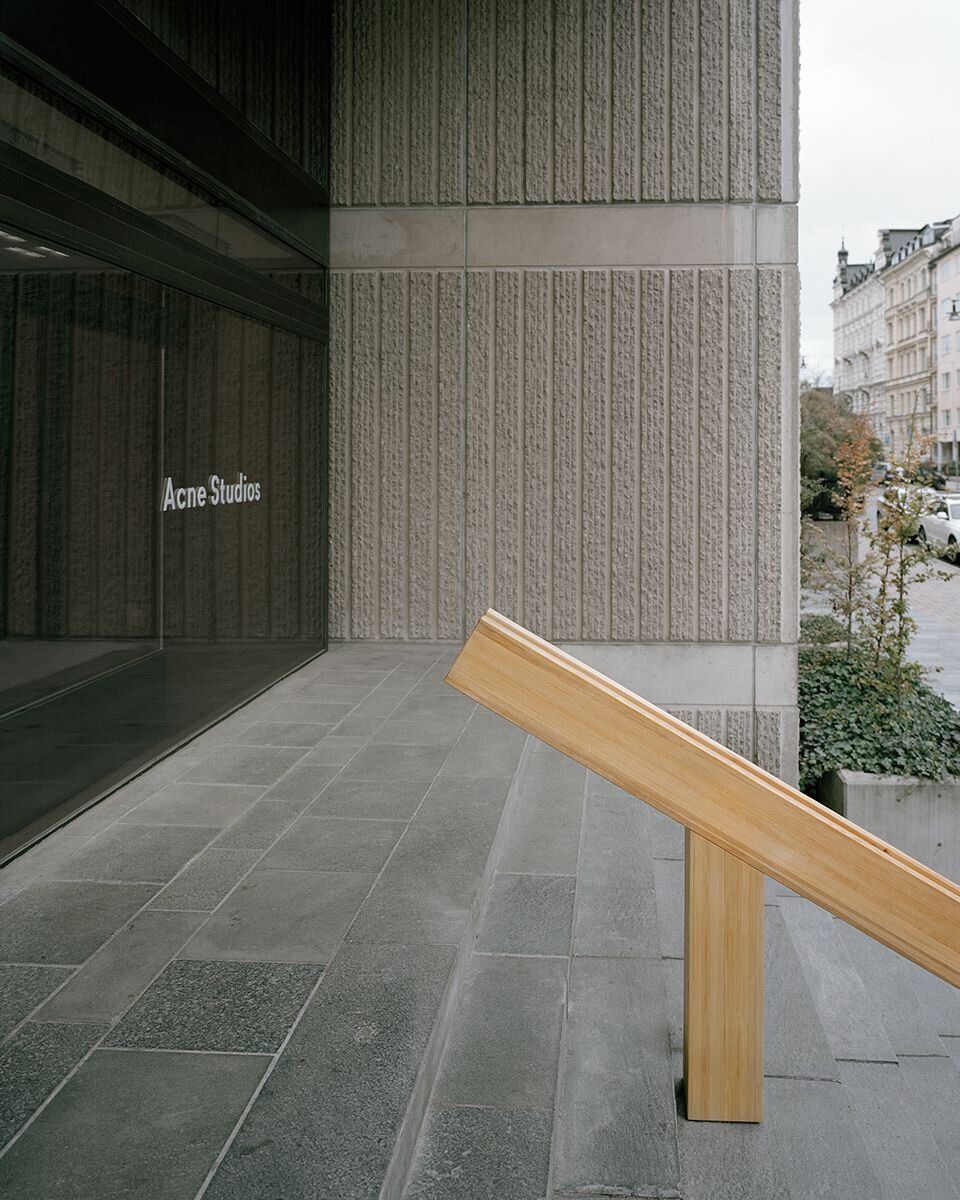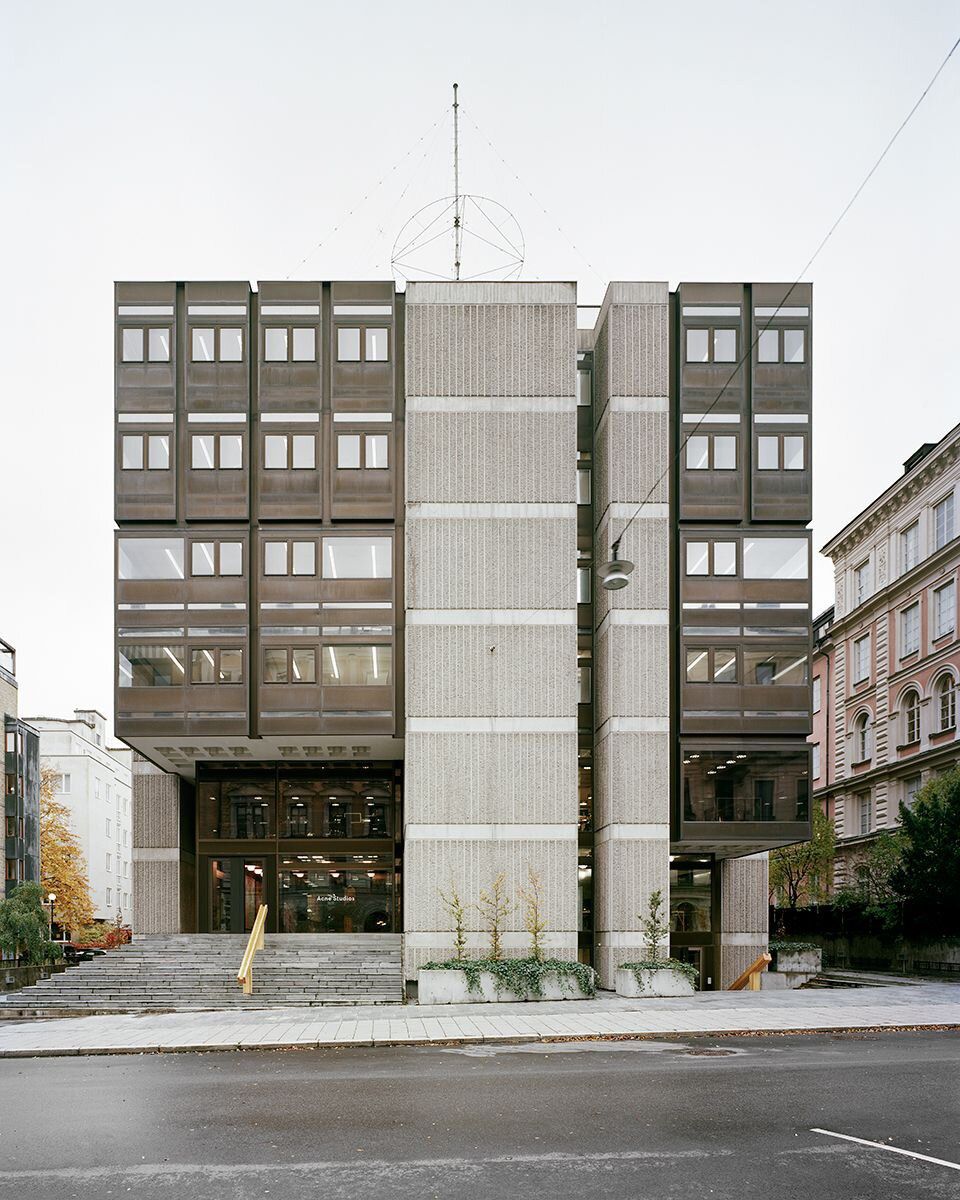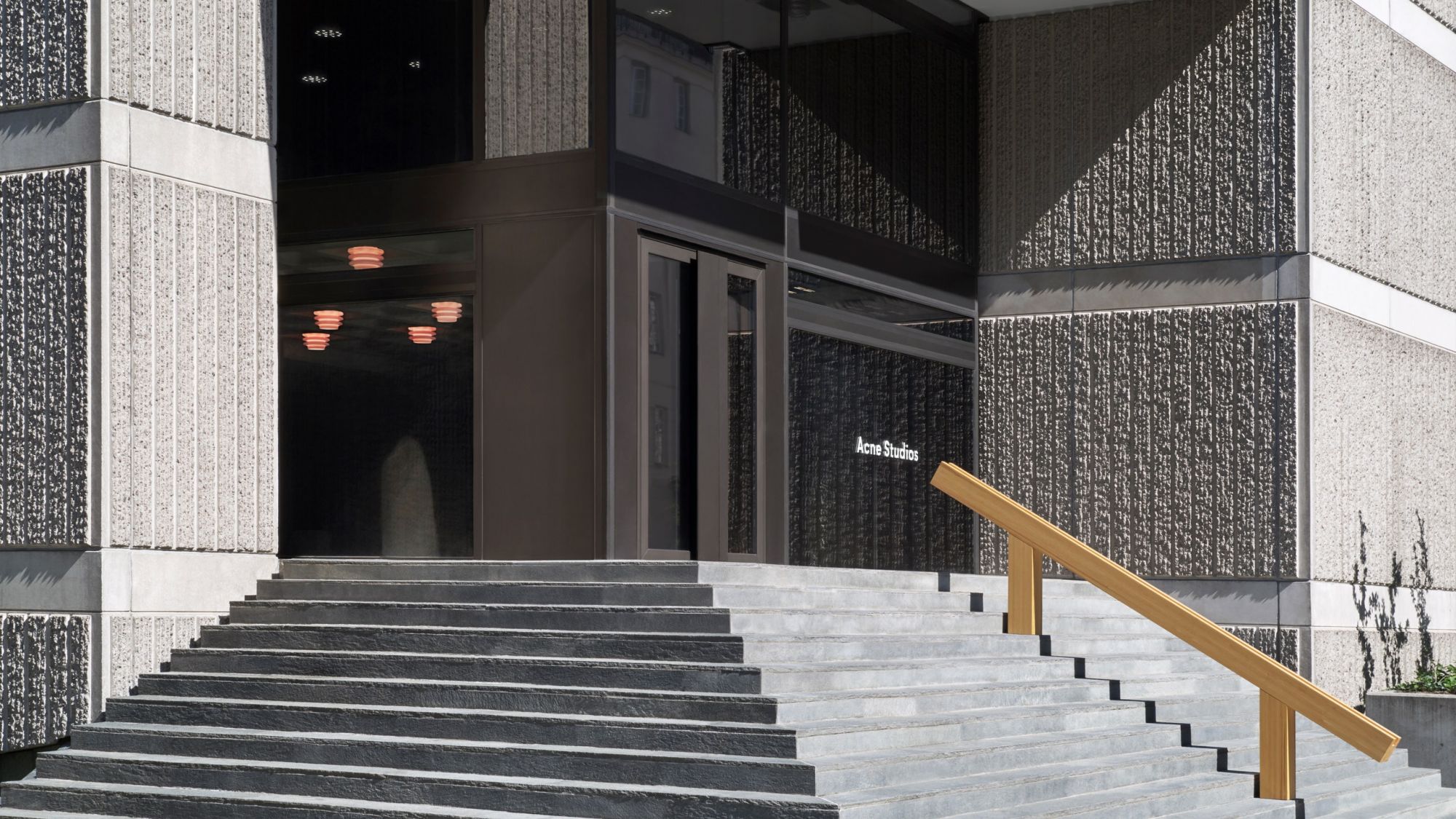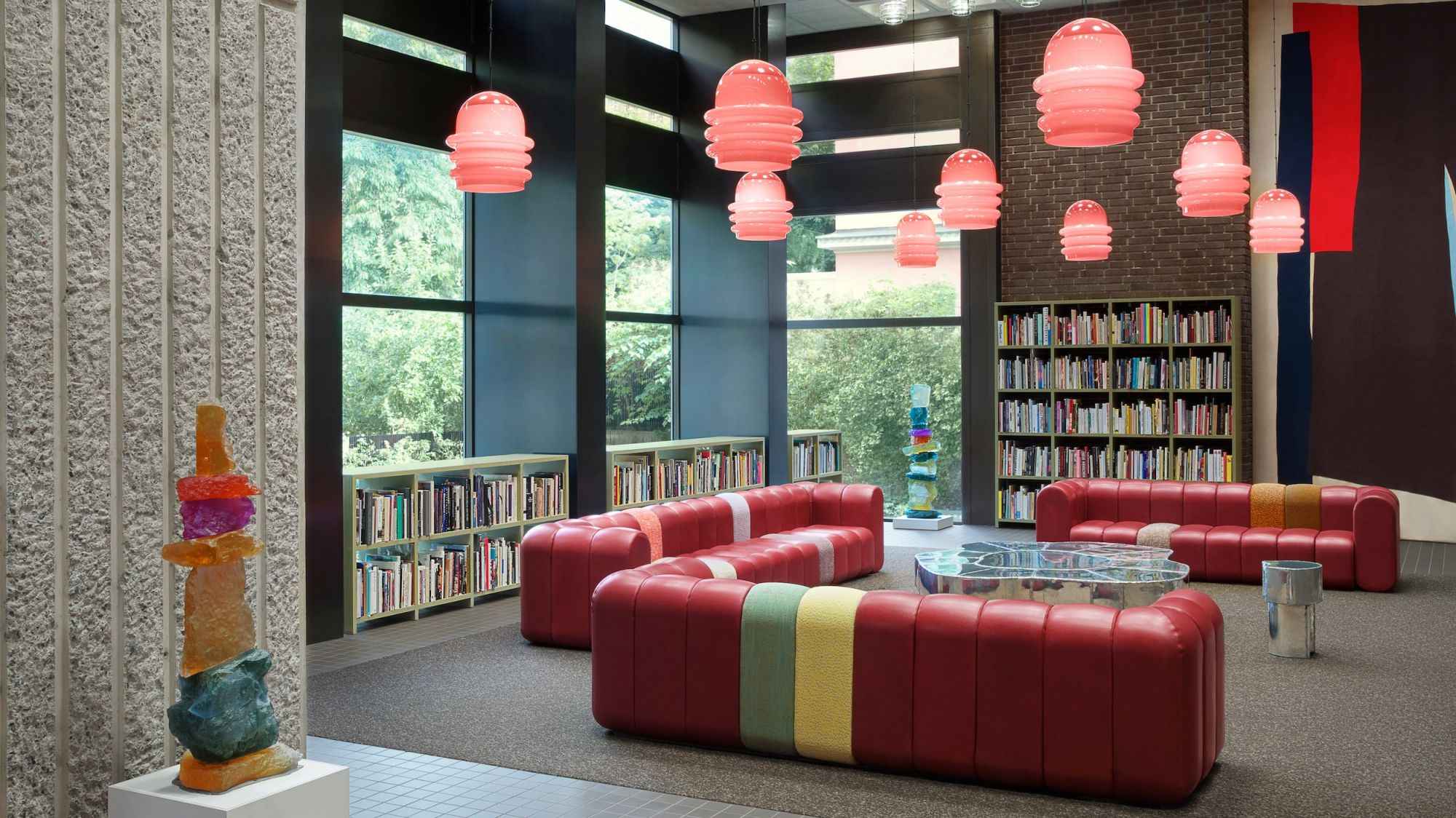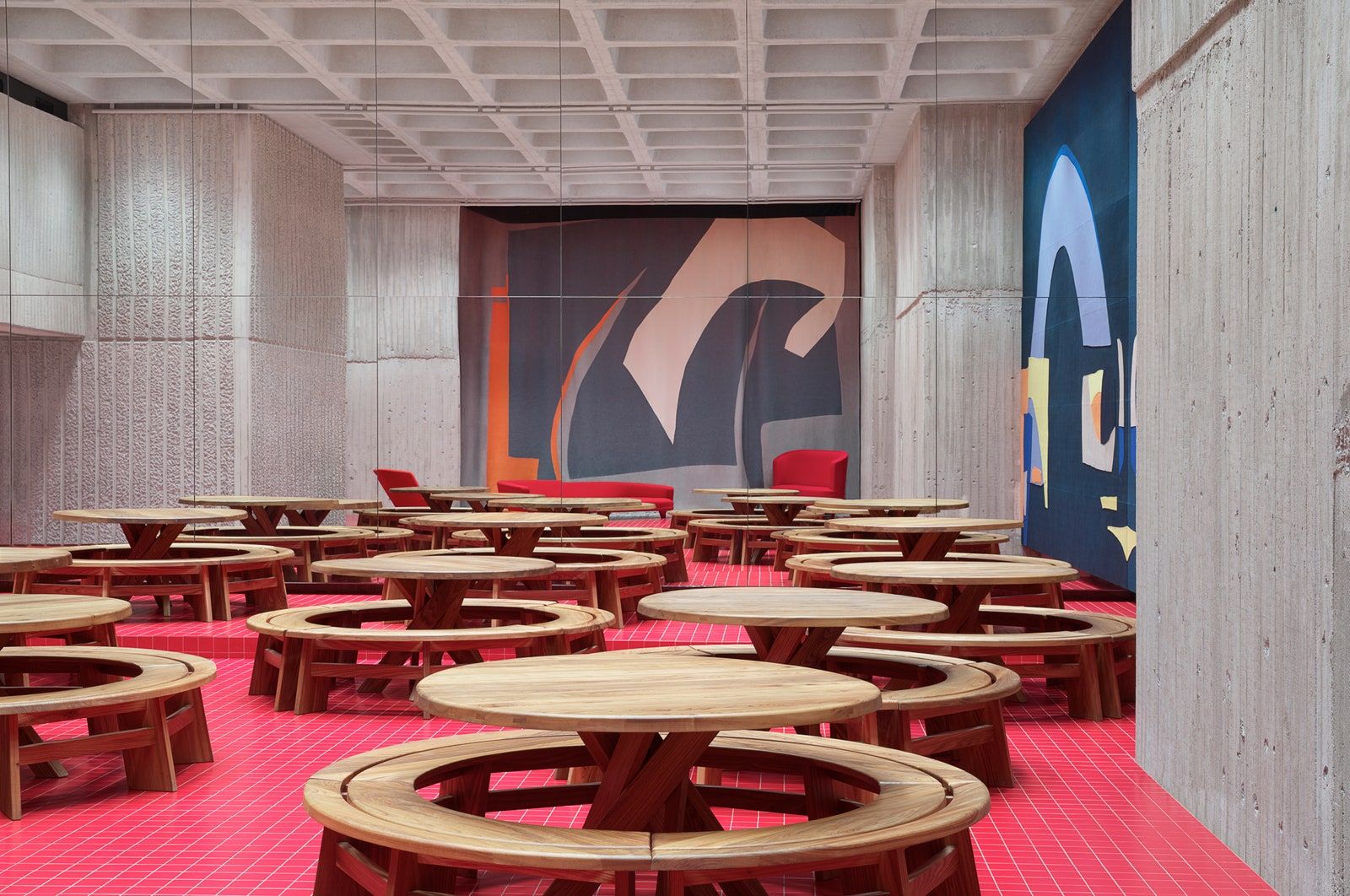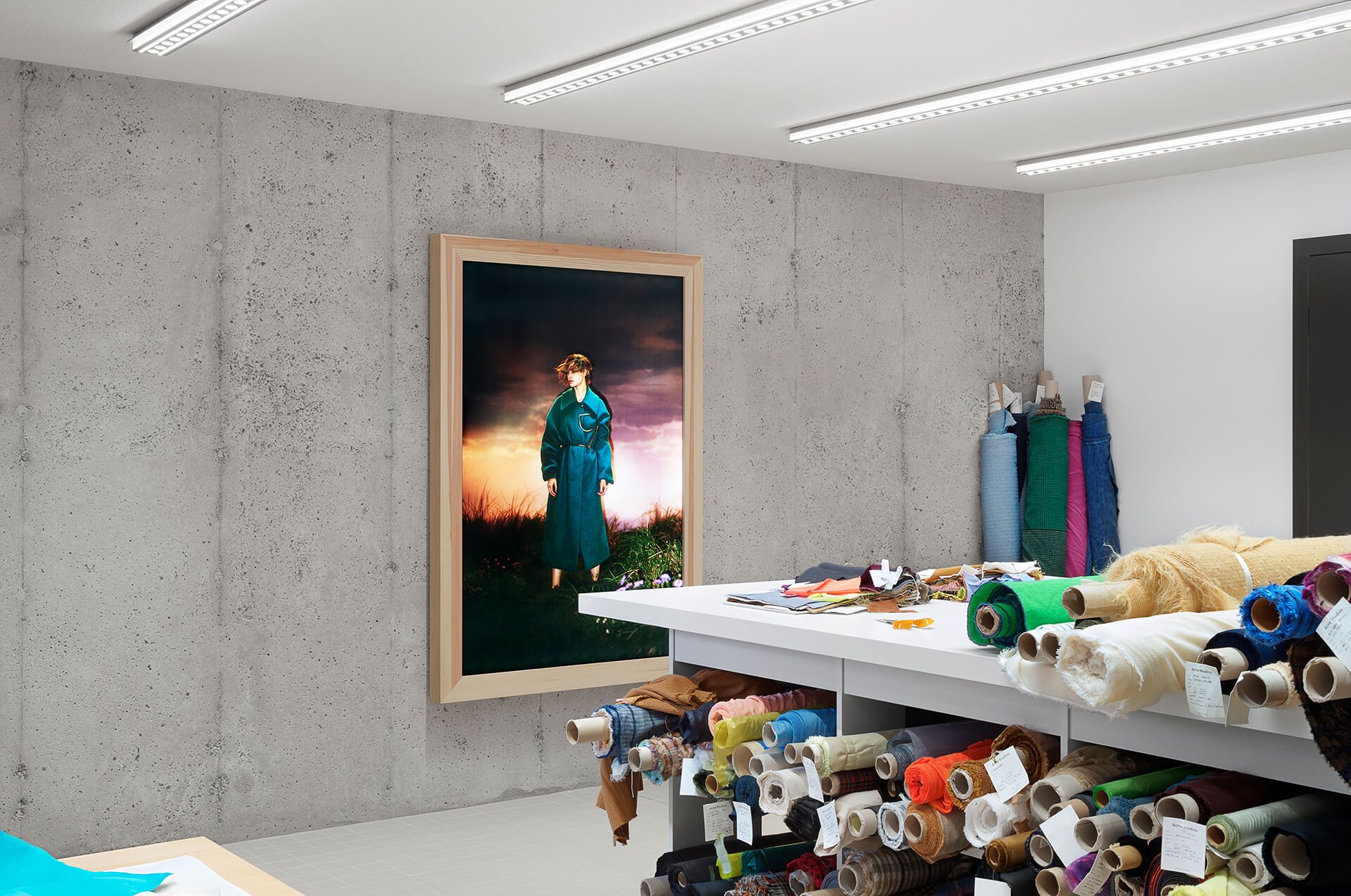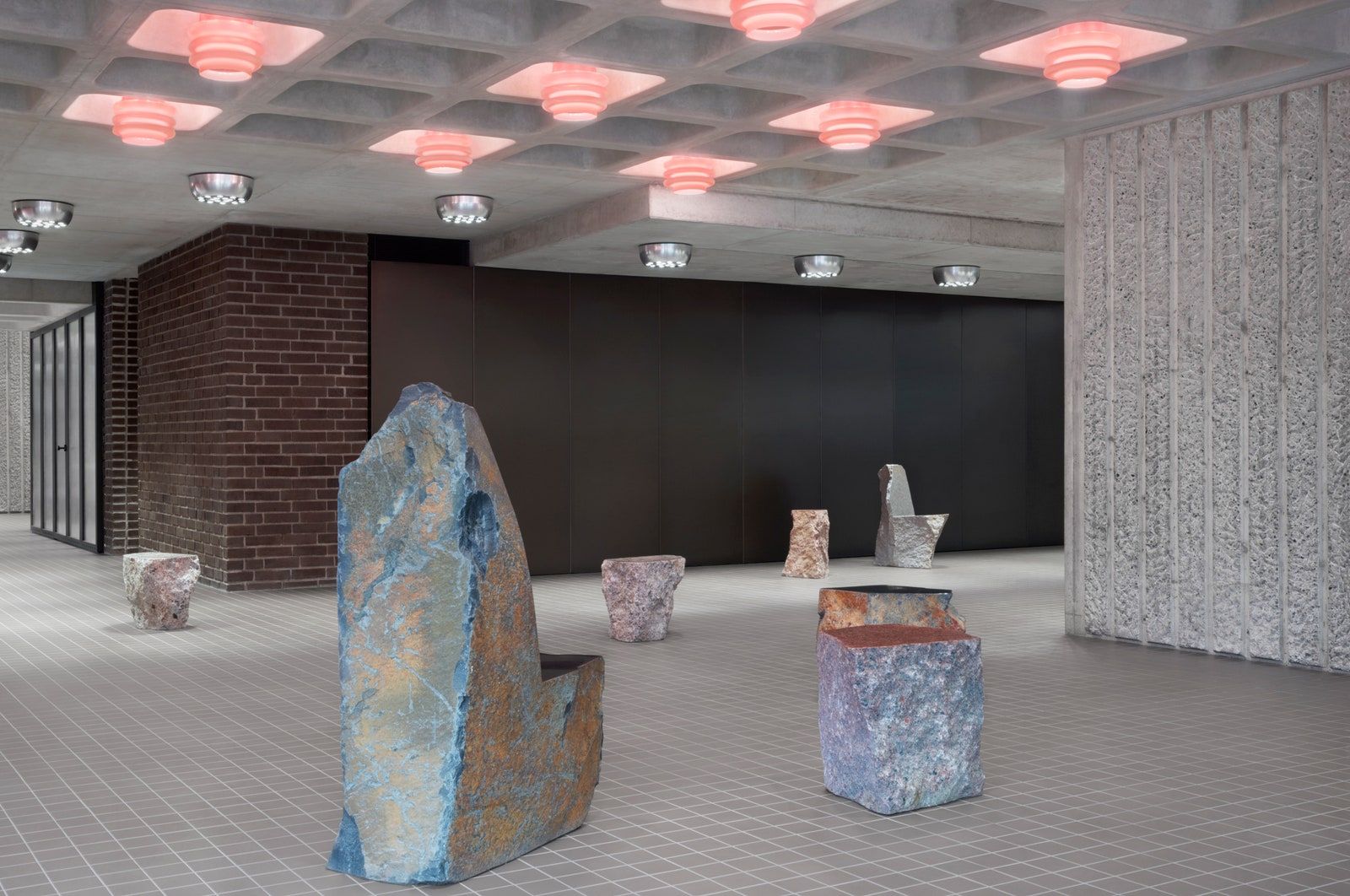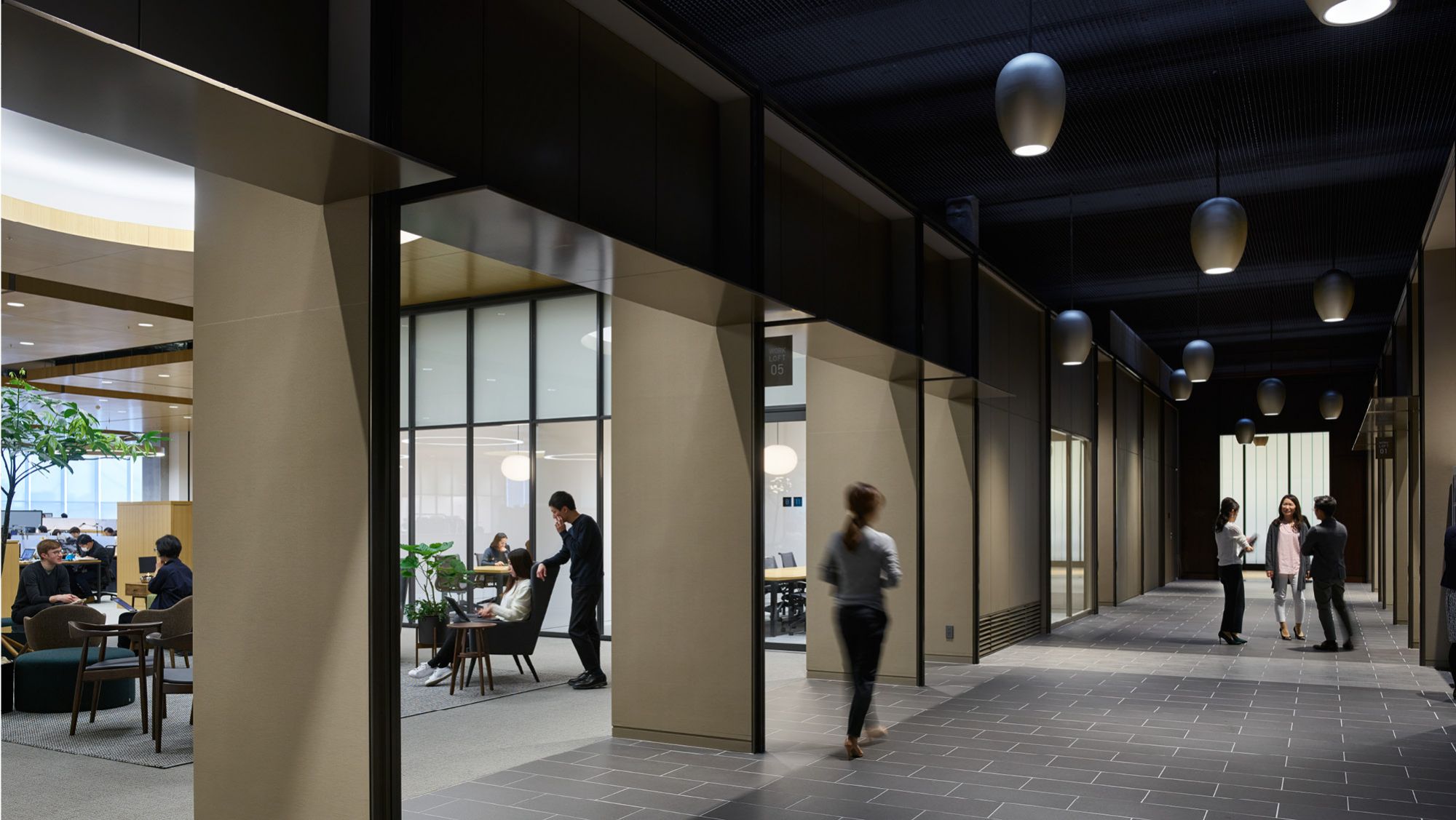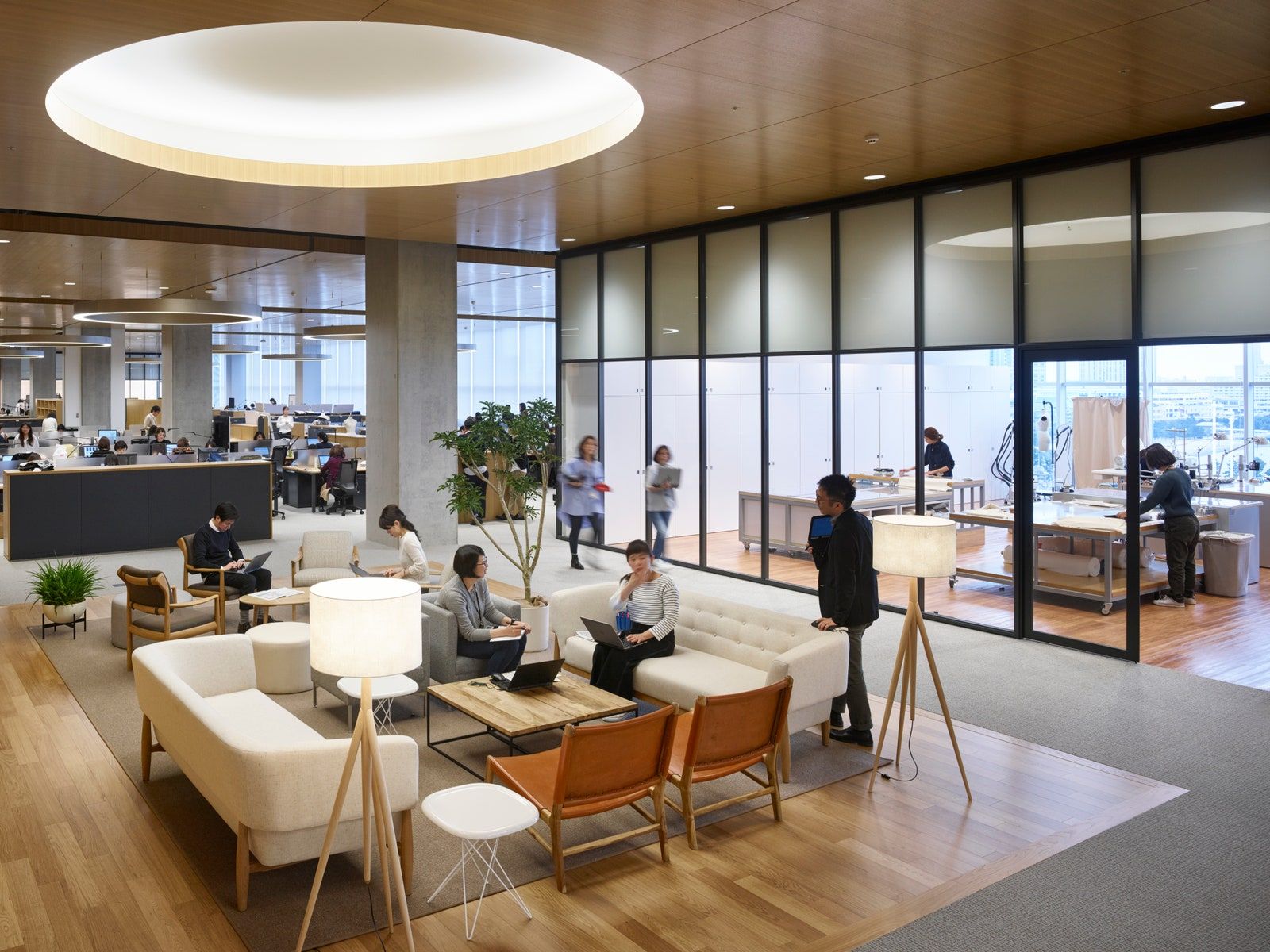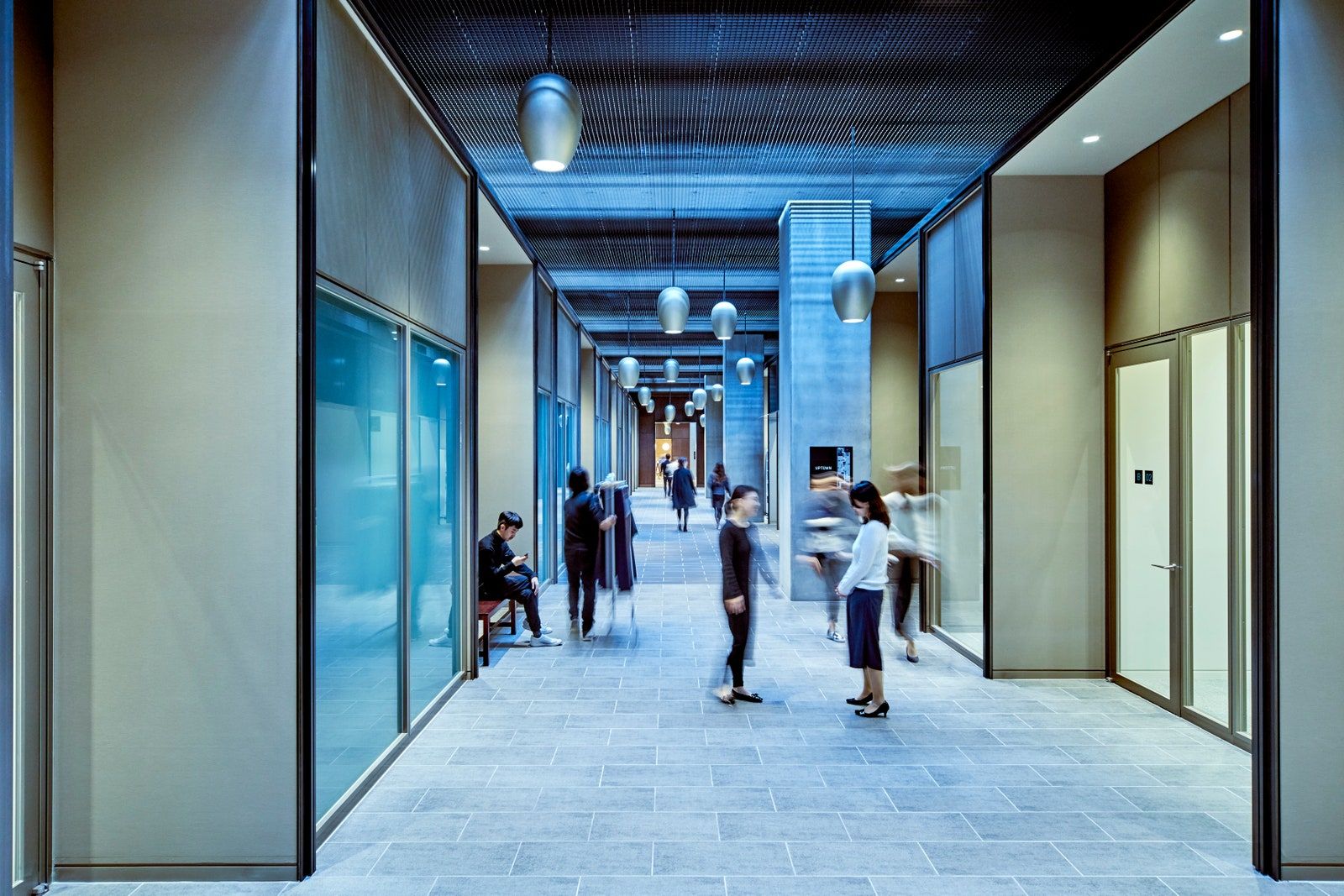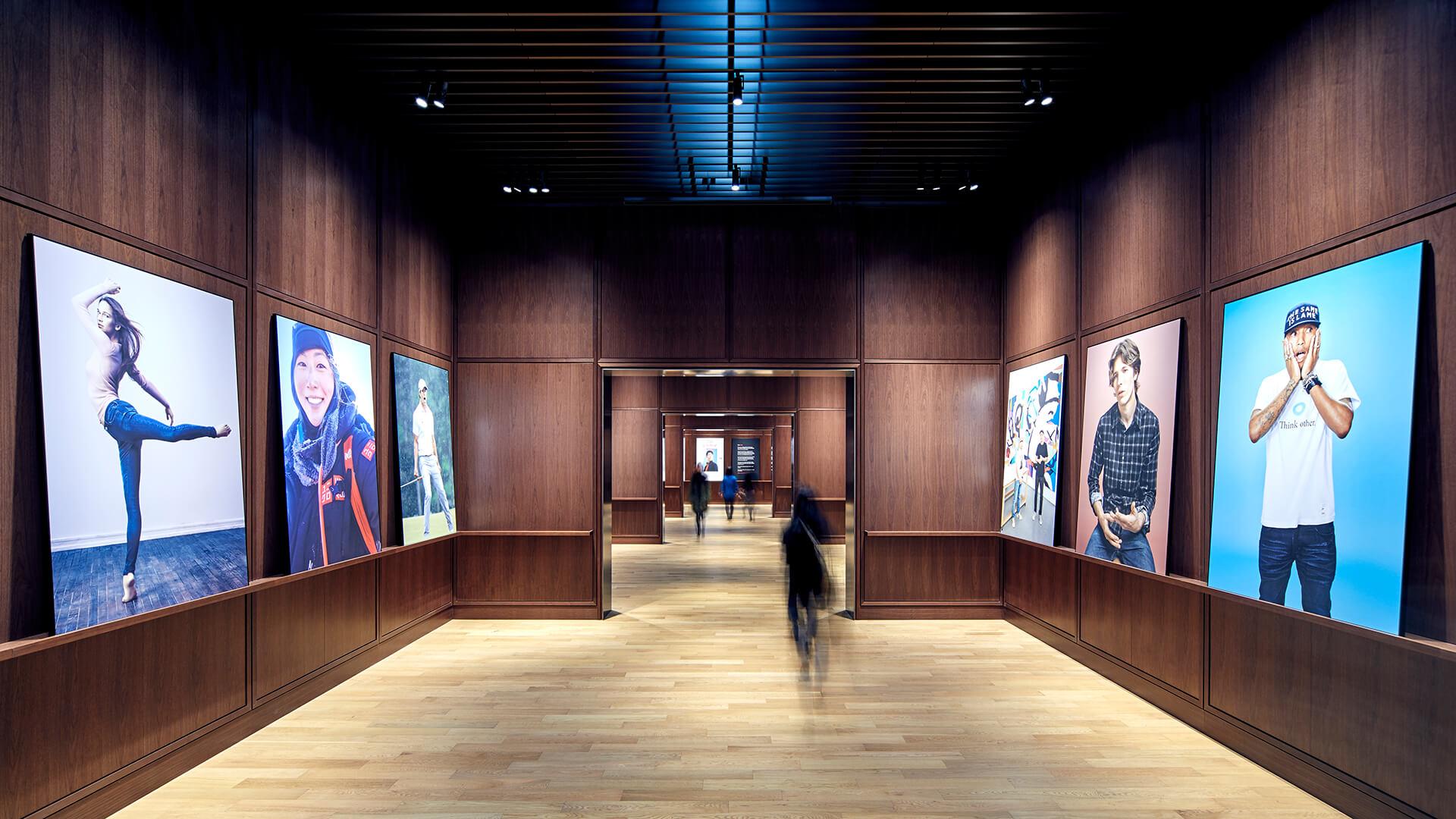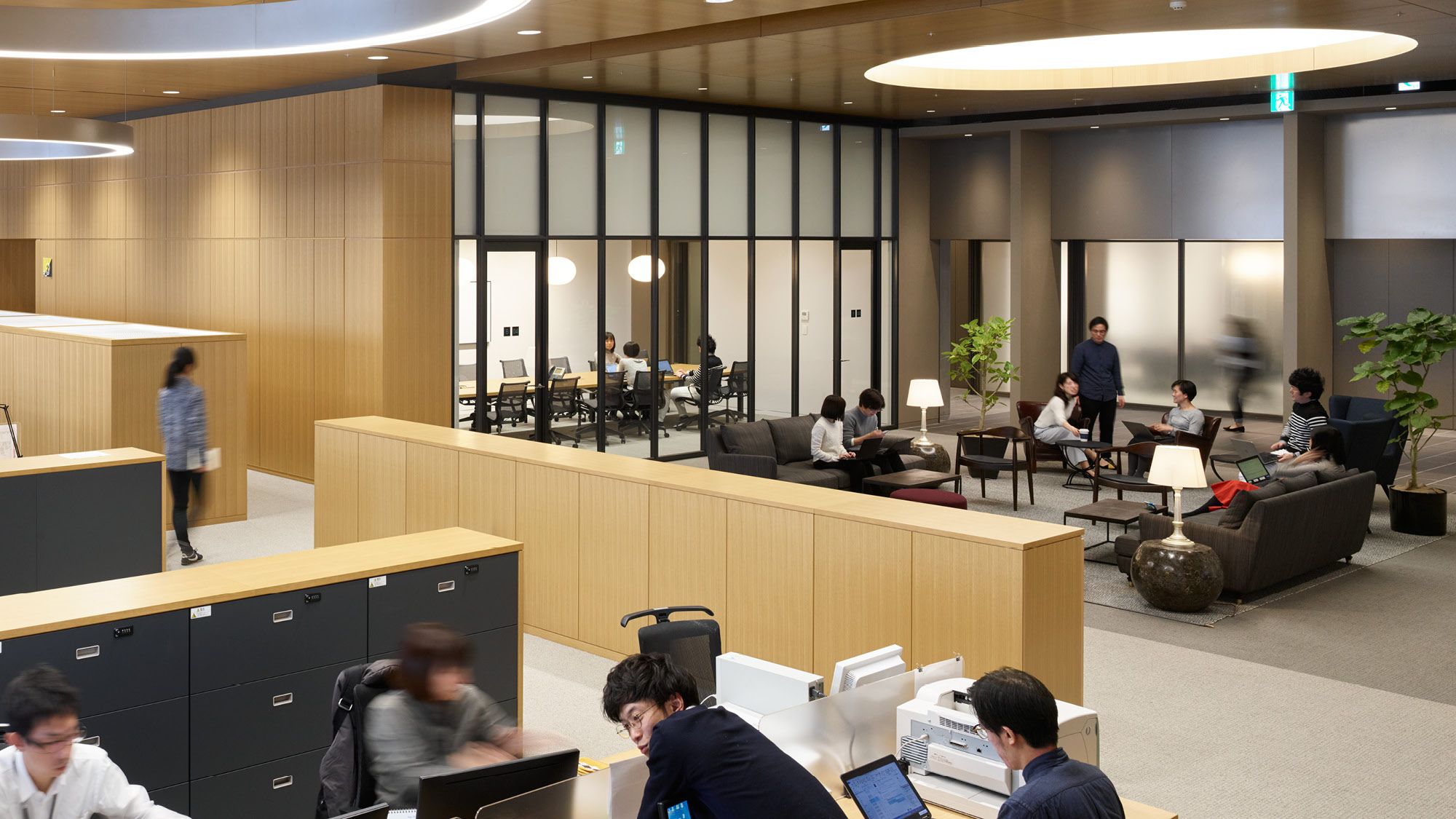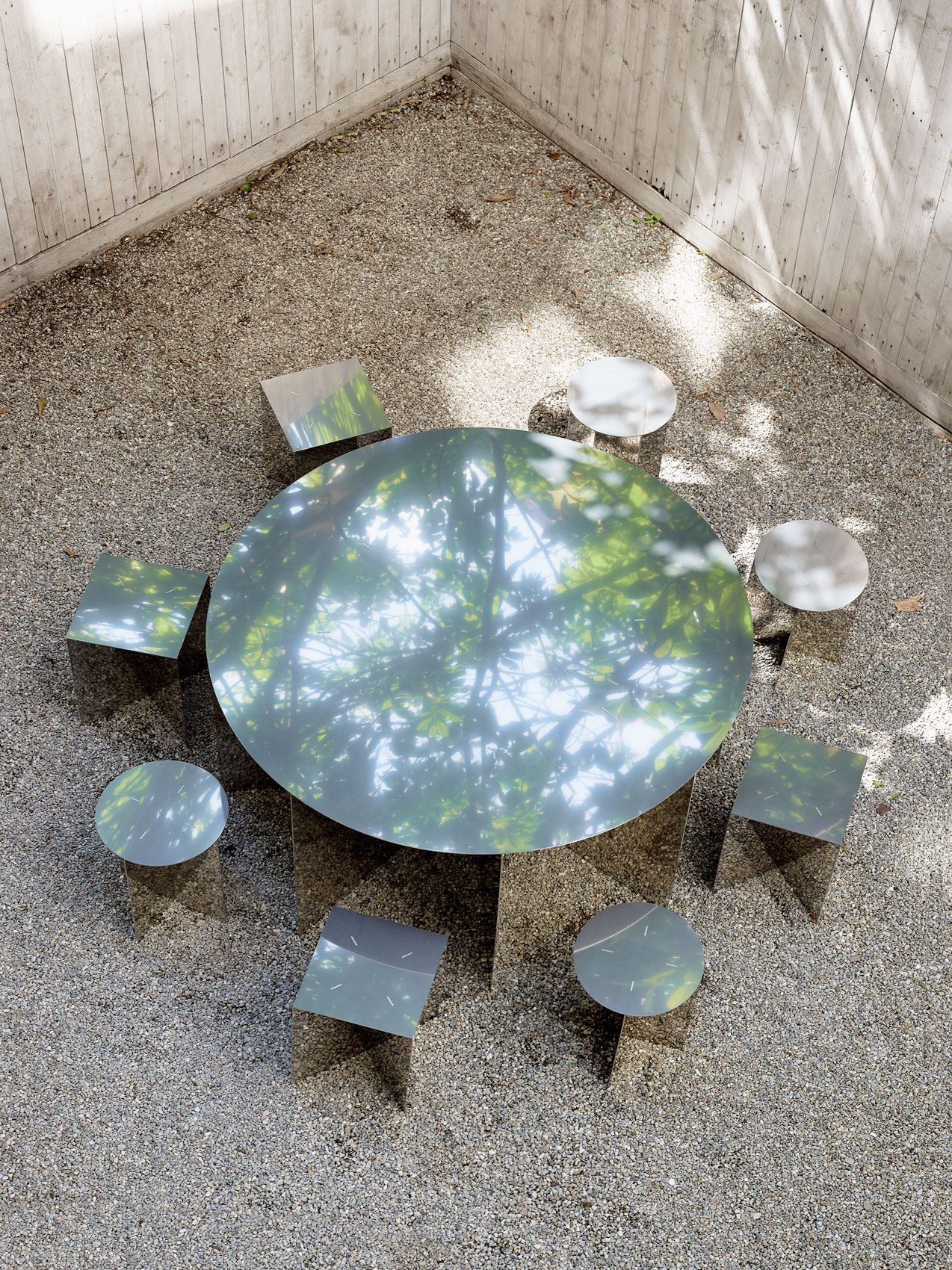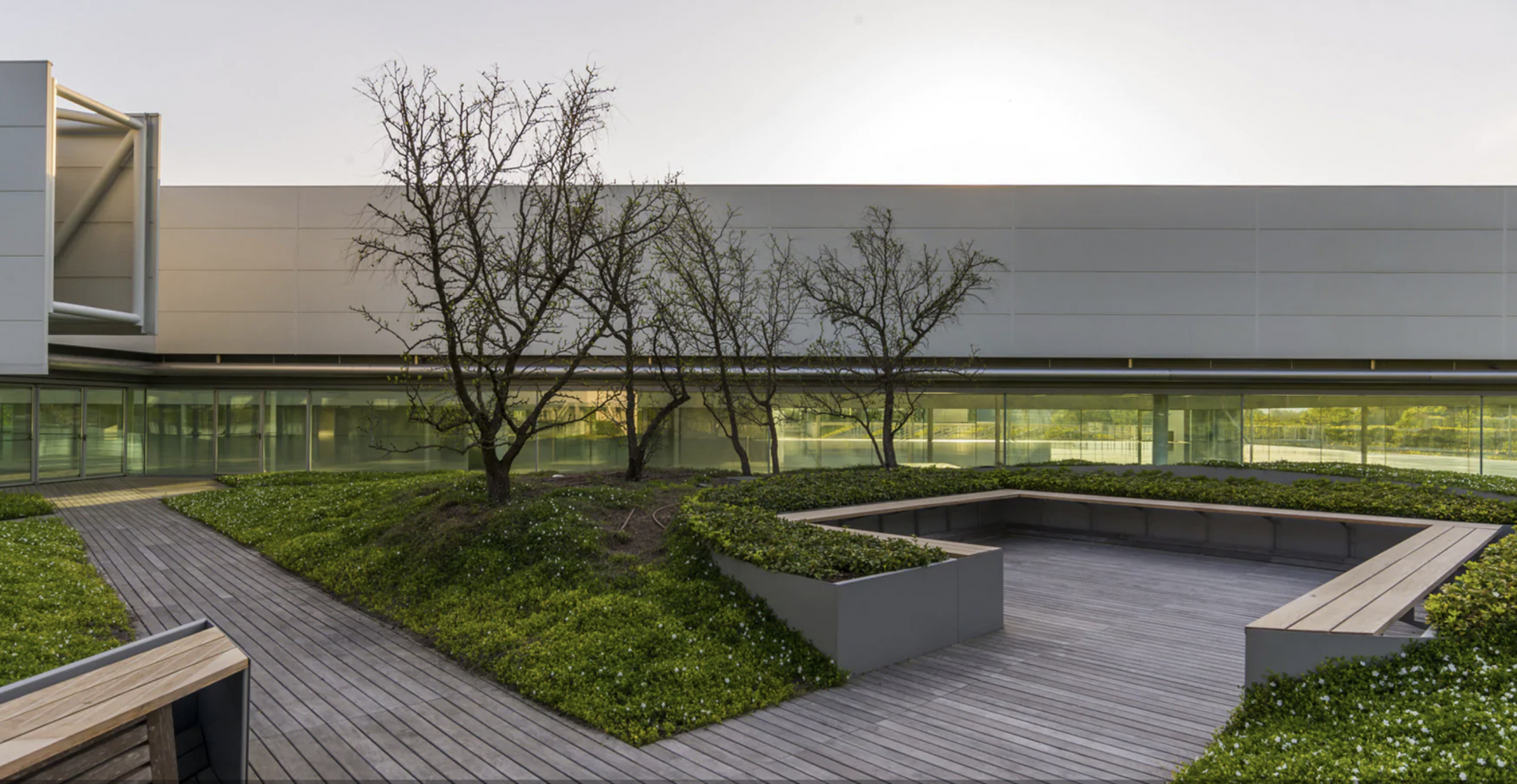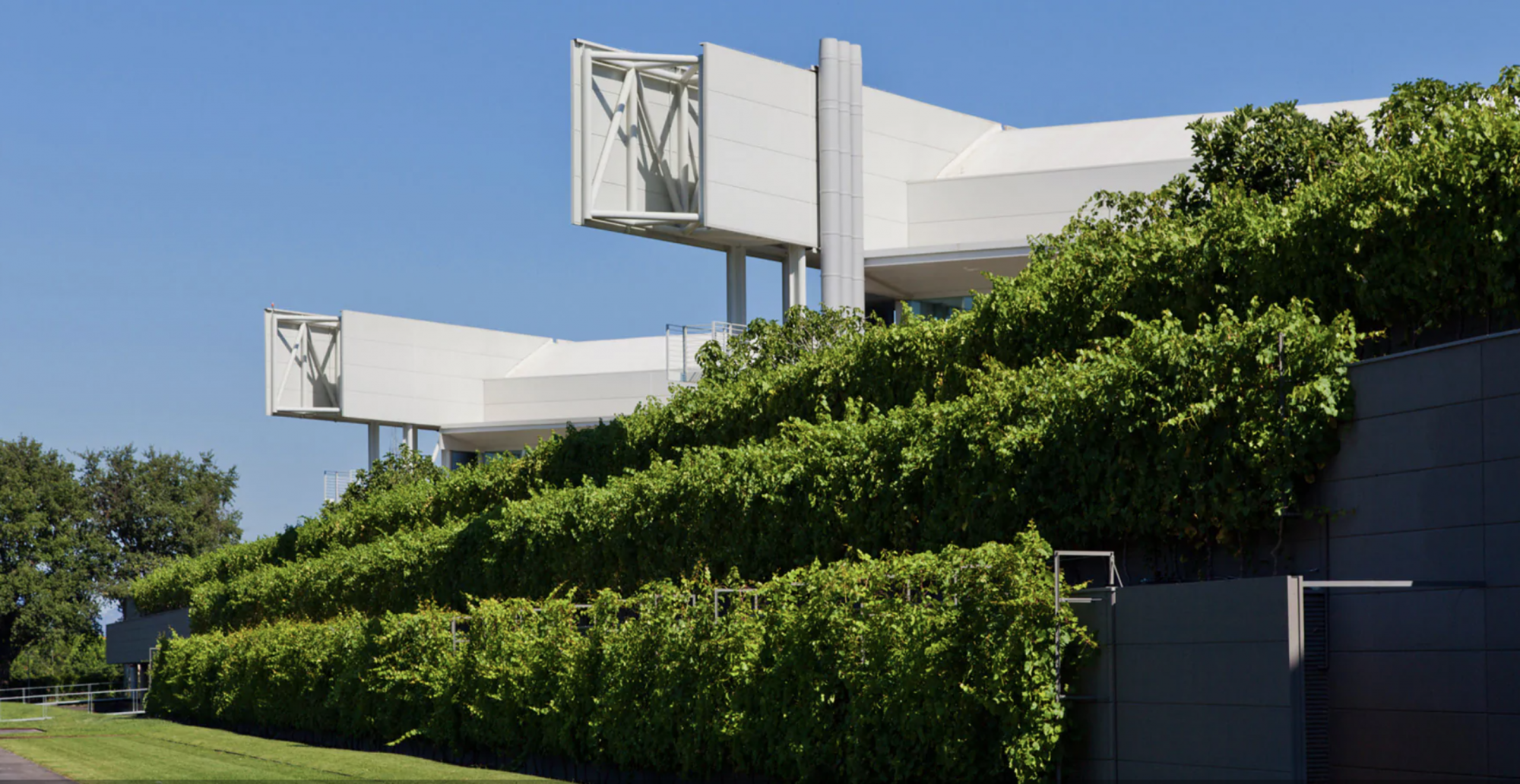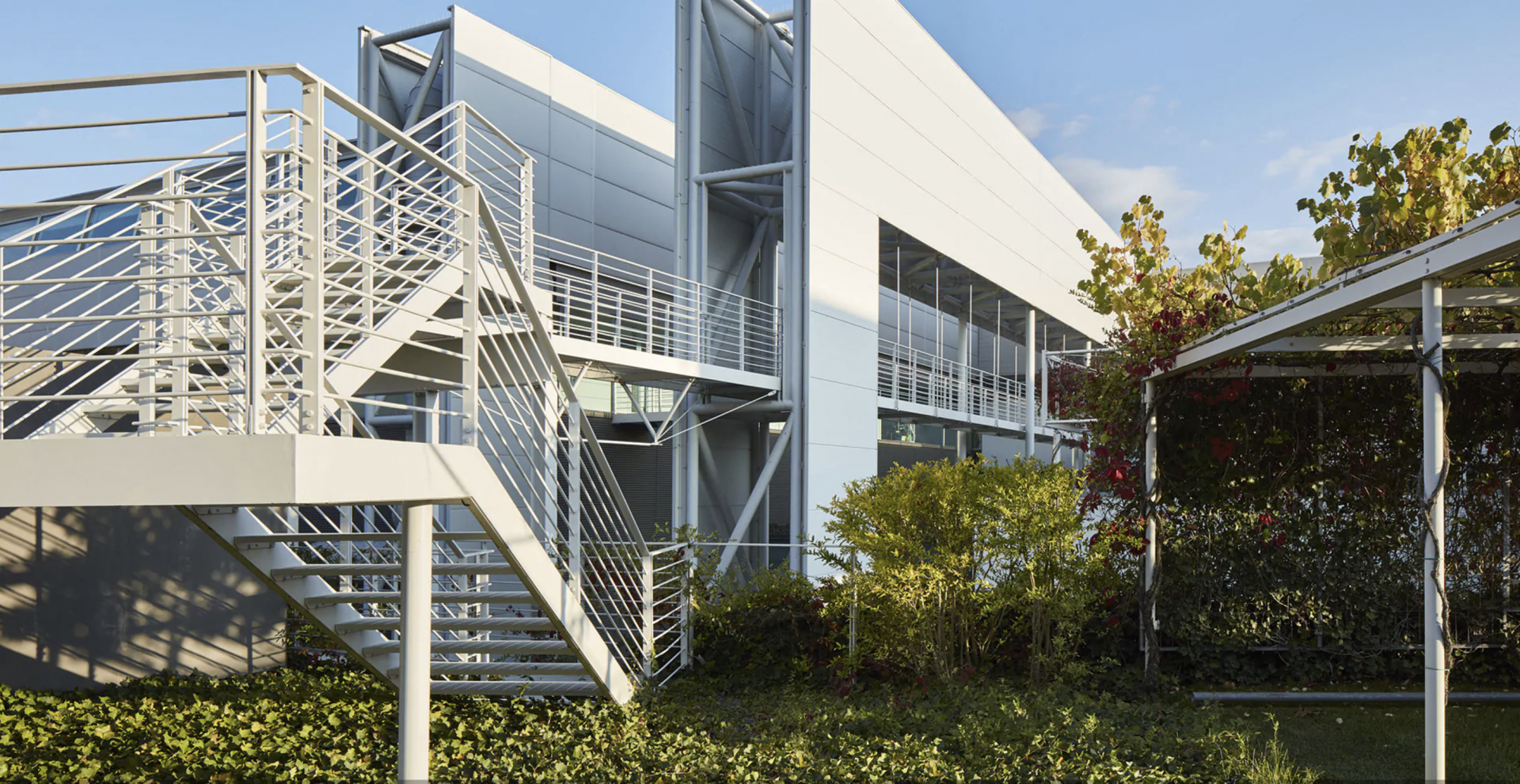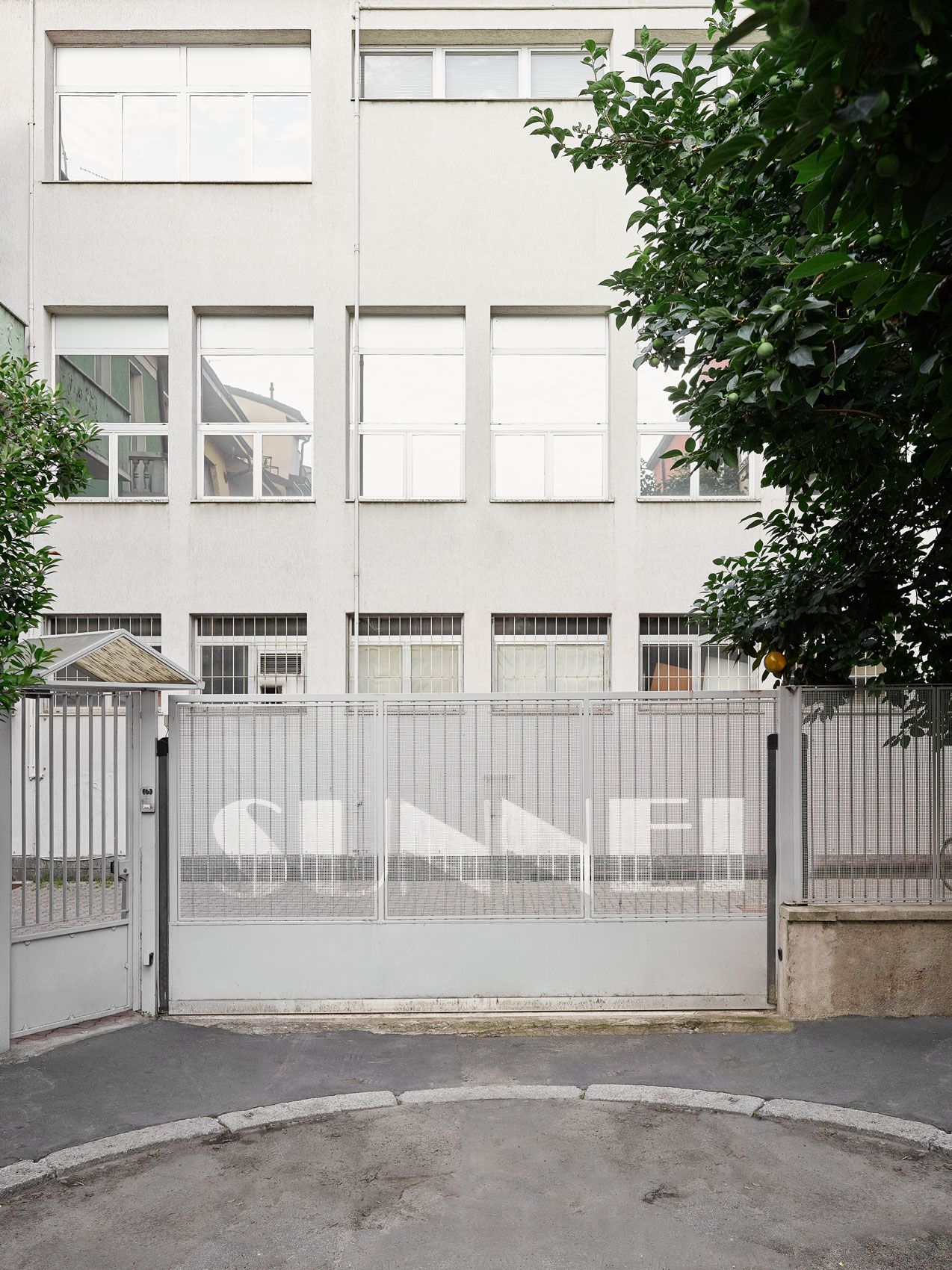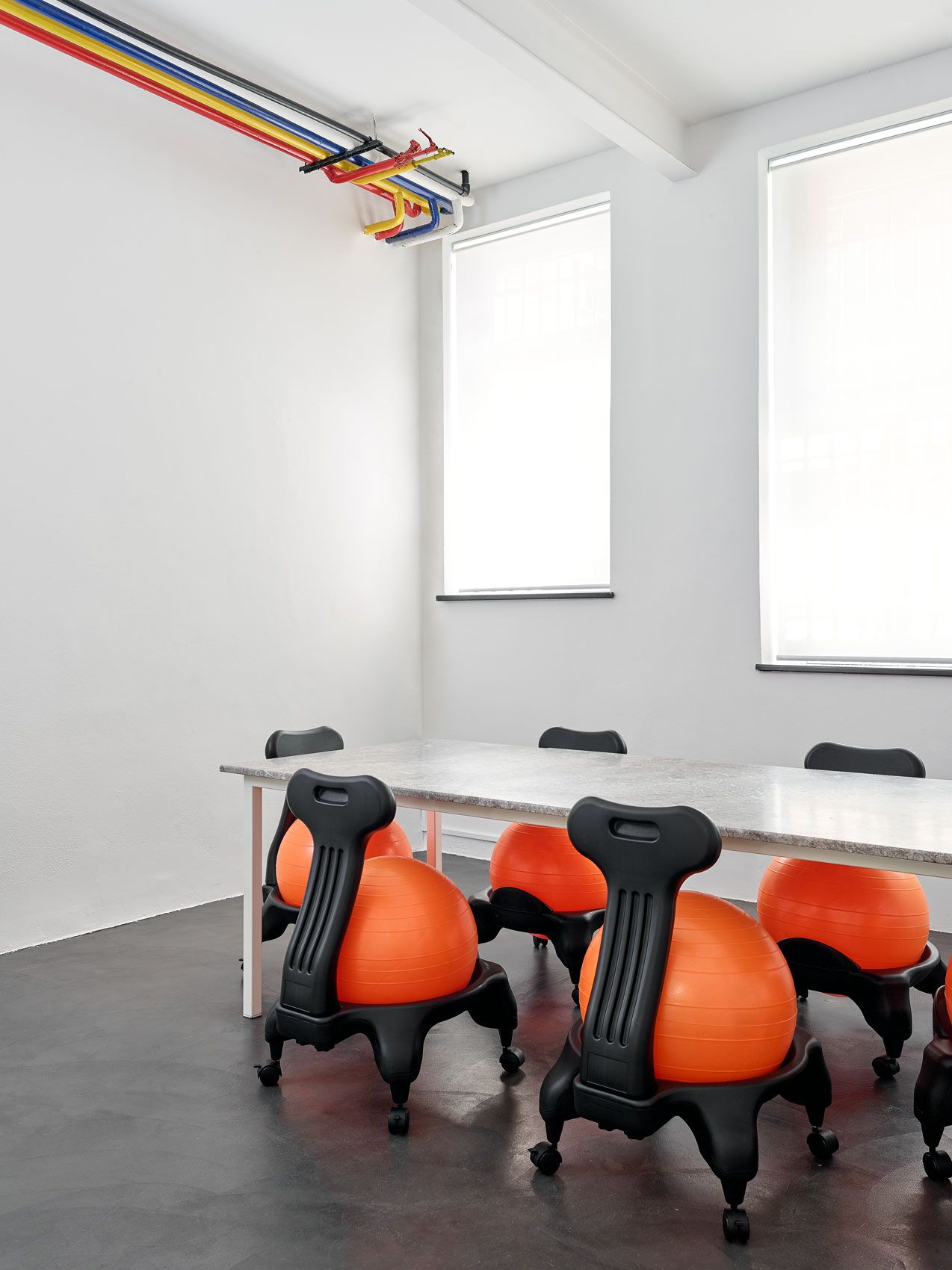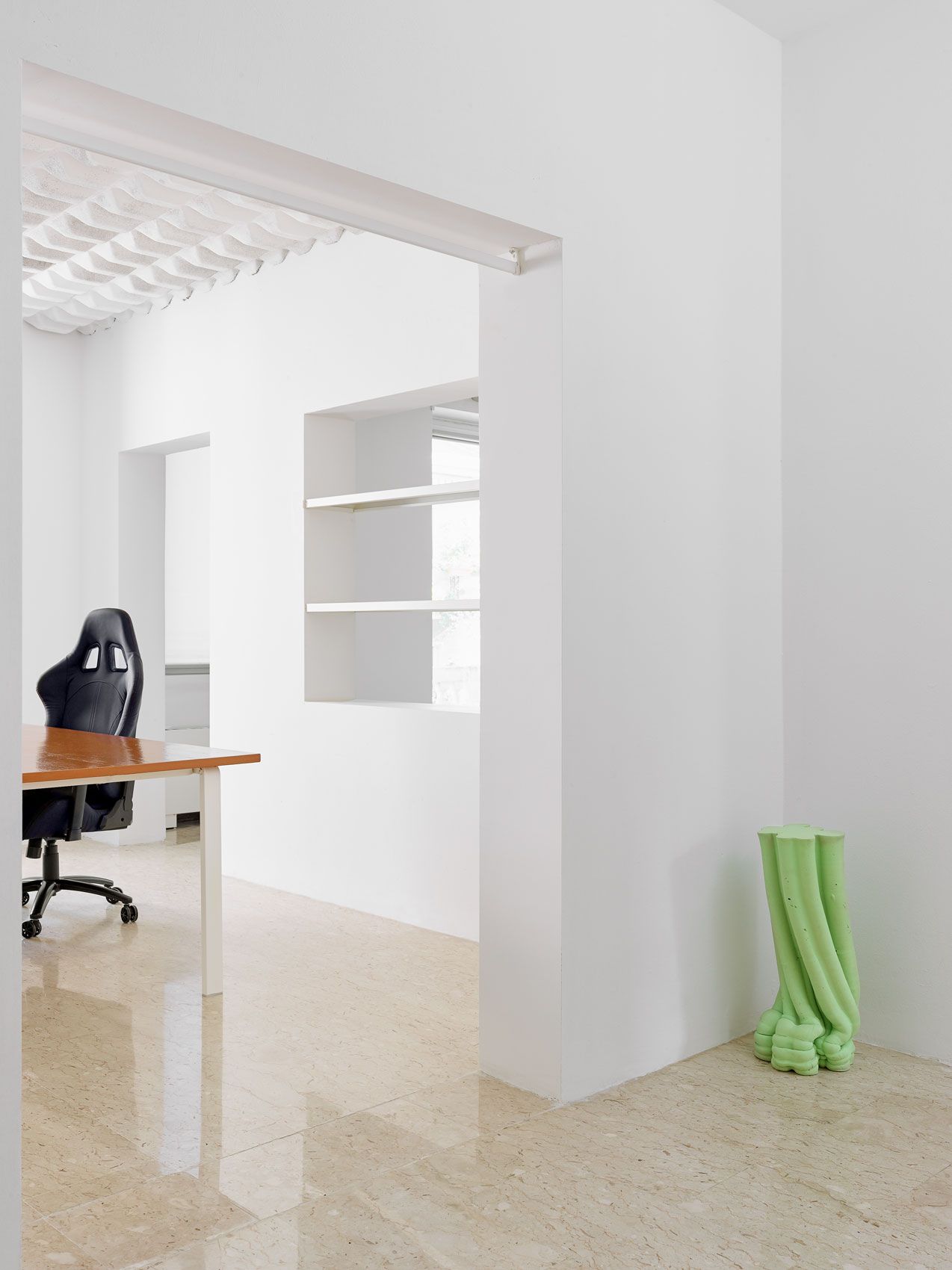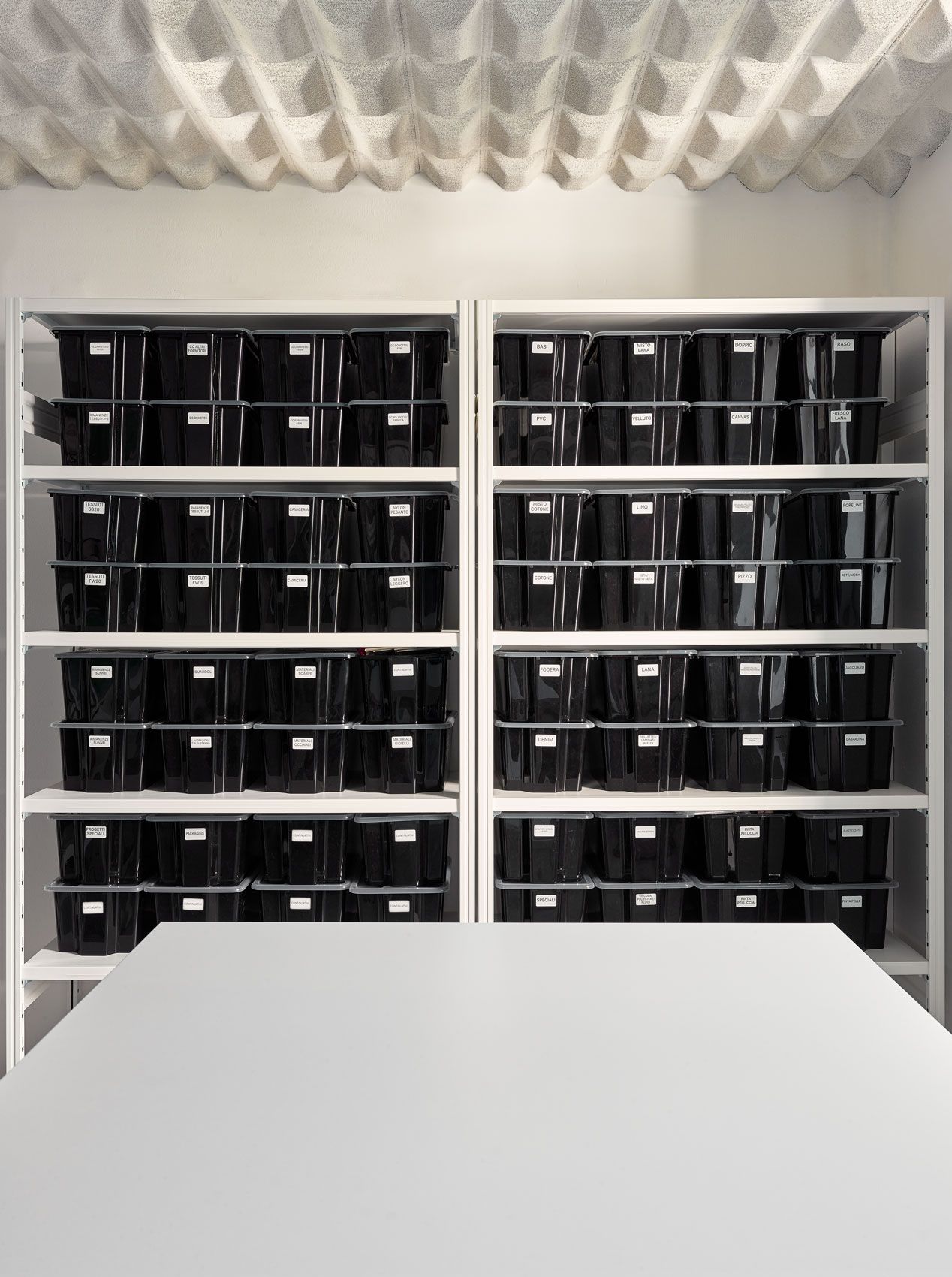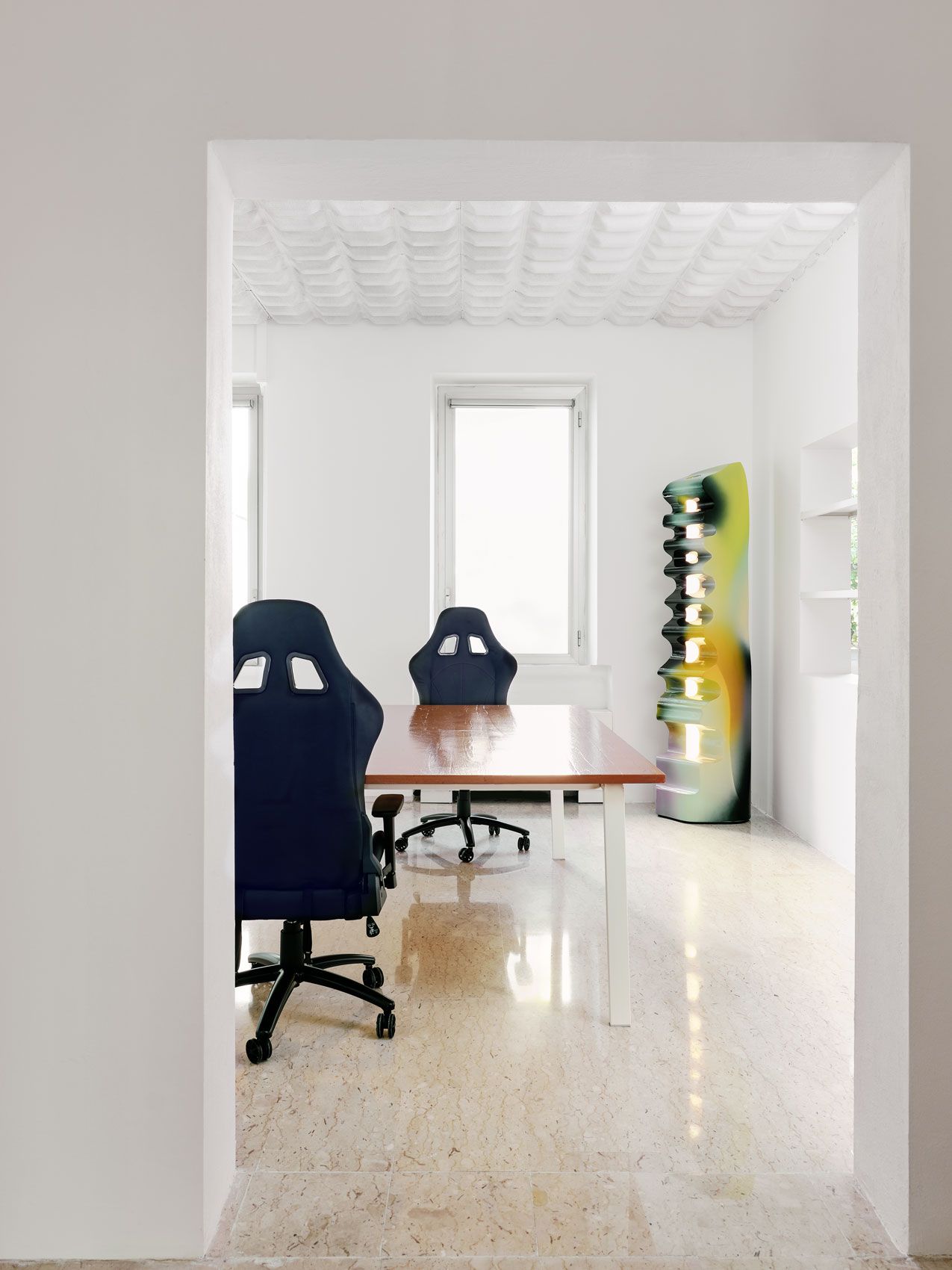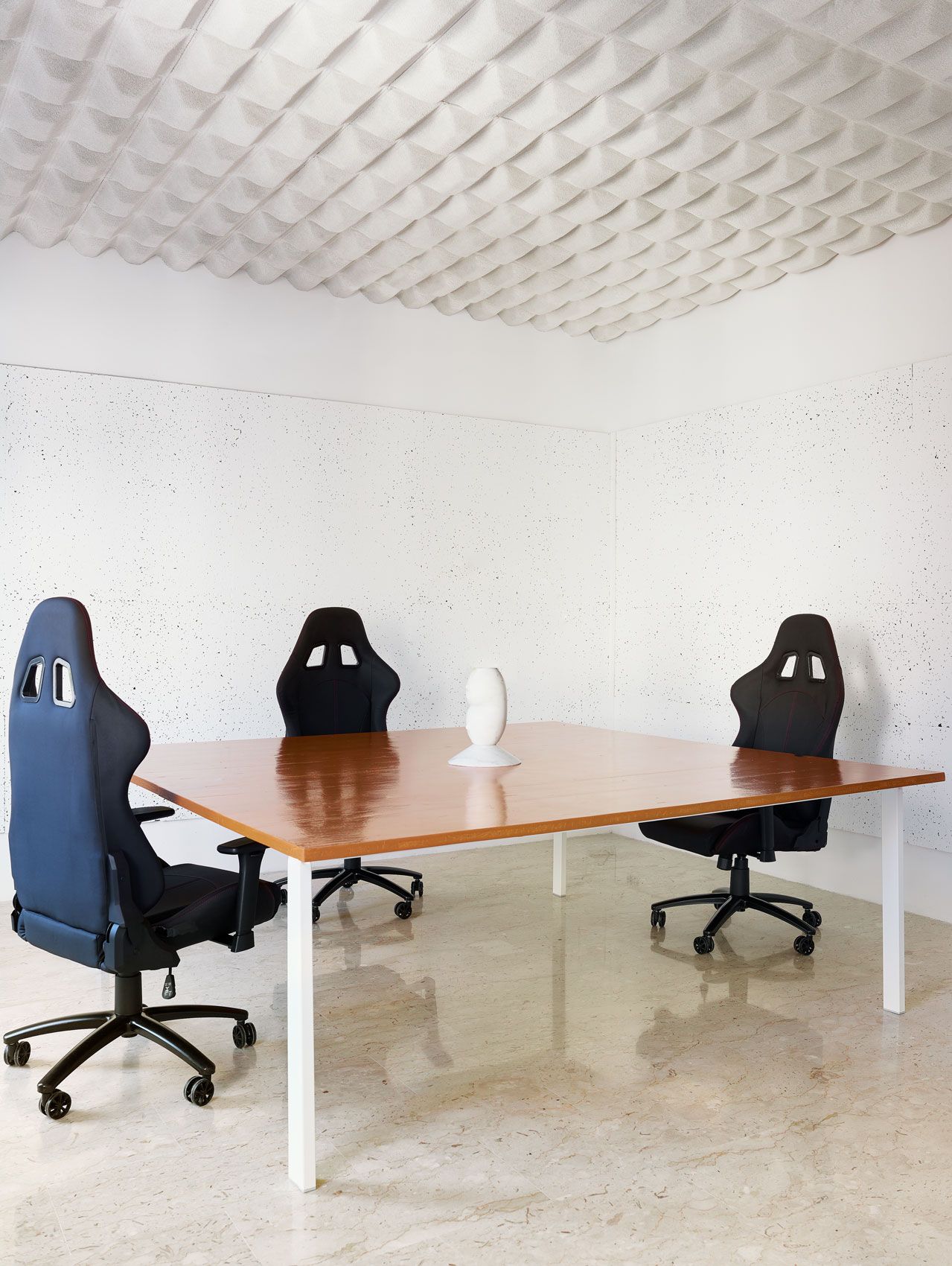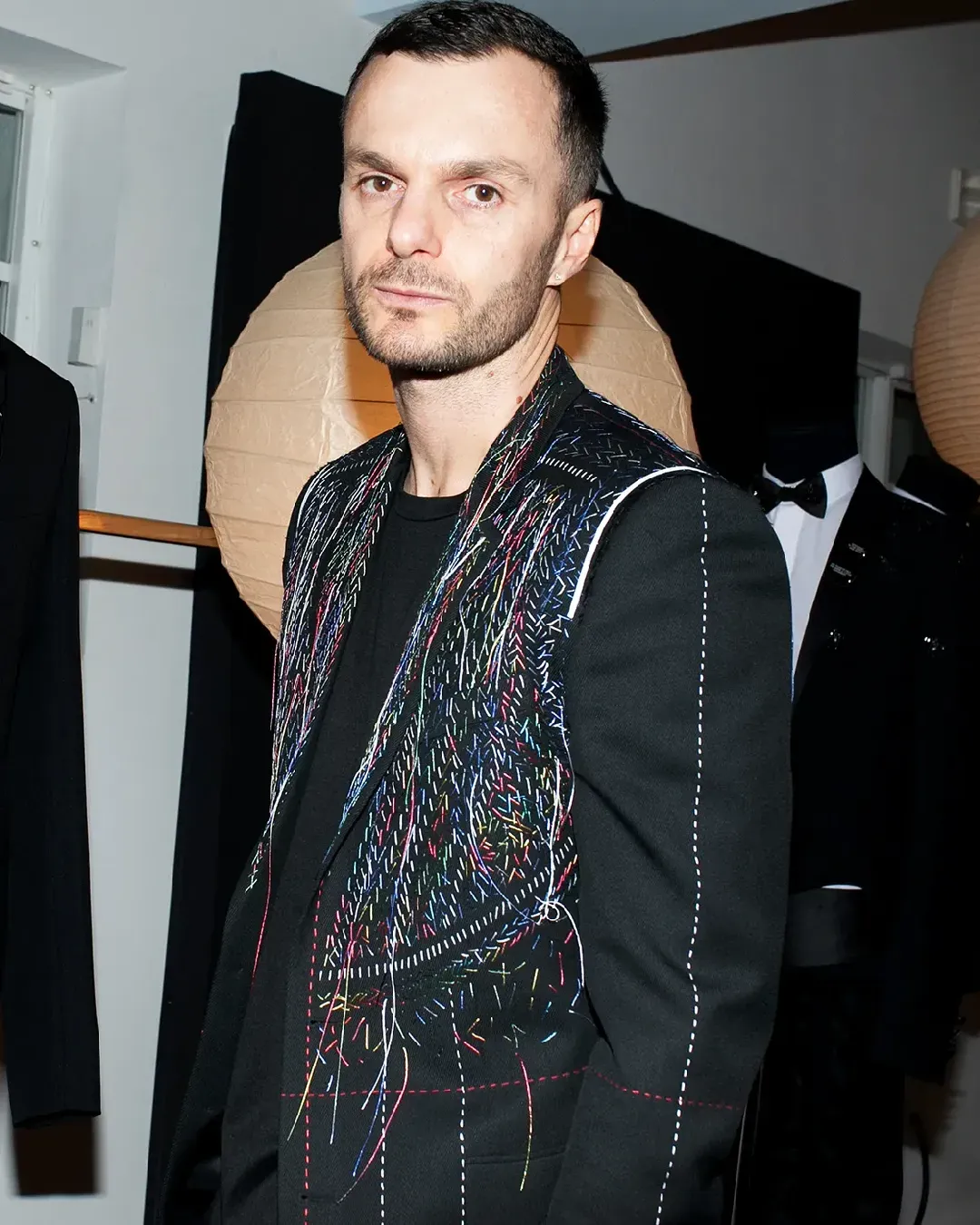
The most stunning fashion brands' headquarters From Uniqlo City in Tokyo to the brutalist building of Acne Studios in Stockholm
Raise your hand if watching the episode of Emily in Paris in which the character played by Lily Collins visits the atelier of the dreaded couturier Pierre Cadault you started wondering what the ateliers and headquarters of great fashion brands really look like. Spoiler alert: they're very different from those seen in Netflix shows.
Far from the clichés of Place-Vendôme, the new offices of the big fashion brands are unique architectural examples, divided between those who prefer the redesigning of historic buildings and those who opt for innovative and avant-garde structures.
nss magazine has selected 8 of the most beautiful fashion brands' headquarters.
Fast Retailing Uniqlo City, Tokyo, Japan
It opened its doors in 2017 what is commonly called Uniqlo City, the huge headquarters of the fast-fashion brand owned by the Fast Retailing group, in the heart of the Ariake district in Tokyo. 1000 employees, belonging to different divisions and sectors, in a structure that not only aims to best represent the aesthetics of the brand but which wants to offer a workspace that encourages collaboration and productivity, while on the ground floor there are precise replicas of the brand's stores, for market research and visual merchandising researches.
The structure, designed by the Portland studio Allied Works Architecture, extends over 1600 square meters (almost the same size as a Manhattan block) of indoor space on a single floor. Precisely because of the huge size of the structure, AWA has decided to treat the project as a small city, thus equipping it with real streets with names and signs, dividing it into neighbourhoods, and also introducing porches typical of old Japanese houses. Finally, Uniqlo City is characterized by ceilings over 4 meters high, a large number of windows, and many common areas, such as bars, internal courtyards, a library and finally the Great Hall, a sort of city square that can accommodate all the thousand employees of the brand.
Foragatan 13, Acne Studios HQ, Stockholm, Sweden
The relationship between Acne Studios and architecture has always been fruitful, a bond that finds its maximum expression in the design of the brand's stores, such as the piece of art located in Milan, in the heart of Brera, or as the recent store opened in Stockholm in the original Stockholm Syndrome bank. Floragatan 13, the headquarters, is also located in the origin city of the brand. The brand space is housed in the former Czechoslovakian embassy and was conceived by the creative director of the brand Jonny Johansson, together with the internal design team of the brand and the Johannes Norlander Arkitektur studio. The project was designed with the intention of paying homage to the original structure - a perfect example of a brutalist building dating back to the 70s - enriching it with the aesthetics and functionality typical of fashion schools, a concept on which Acne Studios likes to insist.
The original building was completed in 1972 by architect Jan Bocan. Spread over ten floors, the structure tells the story of the brand, also through the works of collaborators and artists close to the brand, from Max Lamb to Daniel Silver to Benoit Lalloz. The brand finds its maximum expression in the shade of pink that has always been its trademark, which offers an unprecedented but perfect contrast with the austere structure in which it is located. The entire headquarters was designed with the aim of encouraging interaction between employees and the blending between different teams and offices. The best example of this is the canteen located in the basement, where the embassy cinema was once located. On the first floor, the library is intended to be another place of conviviality, being open to all employees. In the building, there are also floors dedicated to design and production, the atelier, the fitting rooms and a part dedicated to the research of fabrics, as well as Jonny Johnasson's studio.
Palazzina Sunnei, Milan, Italy
The new headquarters of the brand founded by Loris Messina and Simone Rizzo was inaugurated at the beginning of September. Spread over three floors, Palazzina Sunnei is a former recording studio renovated to become the heart of all the brand's activities, from the showroom to the design studio and archive. The original space has been transformed into a studio dominated by white, in an almost aseptic, minimalist and rigorous environment. The structure is designed as a multifunctional space perfect to host events and presentations as well as an open and airy area where the team can share ideas and develop projects. The building is finally completed by an open-air space. The austerity of the rooms is tempered by the presence of works of art created by Ben Orkin, Bloc Studios and Anton Alvarez, among others, which play with shapes and shades, thus adding a colourful and fun touch to the environment.
Prada Industrial Headquarter, Valvigna, Arezzo, Italy
The Prada headquarters in Valvigna, Tuscany, hosts the production division of the brand, as well as the development of leather goods for Prada and Miu Miu, a department store for raw materials, the historical archive of leather items and footwear, administrative offices, an auditorium and the data processing centre of the Prada group. The building, designed by Guido Canali, points to the intersection and dialogue between man and nature, thanks to the presence of natural elements, gardens, green corners inserted in a rigorous and linear context. In fact, the Valvigna factory represents the highest expression of Canali's philosophy, which has always investigated the relationship between internal and external spaces, between man and nature. The workspace is designed for the people who work there, the design aims to find a balance between green spaces and interior spaces, thanks to the rigour of the architecture and the freedom of the natural elements. The area is characterized by suspended gardens, places to rest and get in touch with nature. Steps covered with grass, but also glass ceilings and scenic landscapes offer the feeling of being immersed in nature even when sitting at the desk, in a perfect blend of indoors and outdoors. All this is also dictated by the desire not to disrupt the pre-existing landscape but instead working to have the least possible impact on the surrounding nature.
Glossier HQ, New York City, NY, USA
Millennial Pink could not but be the dominant shade in the Soho headquarters of the beauty brand founded by Emily Weiss valued for over $1 billion dollars. That same shade of colour, punctuated by red accents, which has always decorated the brand's much-desired packaging and products is found to a large extent in the space designed by architect Rafael de Cárdenas of the Architecture at Large studio. The headquarters, which includes the brand's offices, several meeting rooms, an open space, a bathroom and a kitchen, plays on curved lines, which are found both in the furniture, in the two sofas at the entrance, and in the structure itself, in the walls also without right angles. The concrete floors add an industrial touch to space, perfectly balanced by vintage chairs and sofas, that add a luxury flavour.
Aspesi, Legnano, Milan, Italy
The Aspesi factory, located in Legnano, not far from Milan, wants to evoke an almost farm-like atmosphere, typical of the Lombard countryside, or at least this was the intention of the Citterio studio project completed in 2000. Although in fact the façade of the building is made of exposed brick, the air intakes give the building the appearance of a barn. The structure, which is spread over an area of almost 10,000 square meters, houses the beating heart of the historic brand, from the essential phases of designing the collections to the very vast archive (where the Aspesi collections are kept from the early years '90), the style office, the pattern-making department, the fabrics office and some phases of the production chain. On the occasion of ApritiModa, the event during which over 60 prestigious fashion brands and the best Italian artisan companies will open their doors to reveal the places where the creations of Made in Italy are born, set for this weekend, October 24 and 25, Aspesi will open its headquarters in Legnano to the public for the first time. Visits will be allowed only by appointment from 10 to 17 by booking on apritimoda.it.
Gucci Hub, Milan, Italy
Gucci Hub, a redevelopment project of the former Caproni factory, designed by the Piuarch studio, was inaugurated in 2016 and covers an area of over 30,000 square meters. The structure aims to enhance the formal characteristics of industrial architecture, which arose in the 1920s, maintaining and updating them to turn them into the new Gucci headquarters. The disused warehouses, characterized by modular structural spans and topped by shed roofs that let light into the interior spaces, create through their arrangement a continuous relationship between inside and outside. Inside the area, the large volume of the hangar, which hosts the events and fashion shows of the brand led by Alessandro Michele, is striking. The new 6-storey tower, designed to establish a strong relationship with the pre-existing volumes, finally stands out within the area, breaking the symmetry of the site and generating a chromatic contrast between the brick facades of the former production buildings. Finally, among the buildings, pedestrian paths are divided into a succession of solids and voids, in which vegetation plays an important role.
Nike World HQ, Beaverton, Oregon, USA
With the video of the hit song Laugh Now, Cry Later, Drake took us all into the huge Nike campus. The facility includes, among other things, a full-size basketball court, the huge Nike Company Store, a full-sized football field, three soccer fields, an Olympic-size swimming pool, running and athletic tracks, a lake in the outdoor area, cafes, bars, restaurants, hairdressers, manicures - basically a small town. Here, the brand's innovative products are designed and developed, with particular attention to experimentation and research, carried out in the sports research laboratory. In case you want another taste of Nike HQ, we recommend watching the episode of the Netflix Abstract series dedicated to the genius of Tinker Hatfield, who will take you in the offices and laboratories of the Swoosh.










































